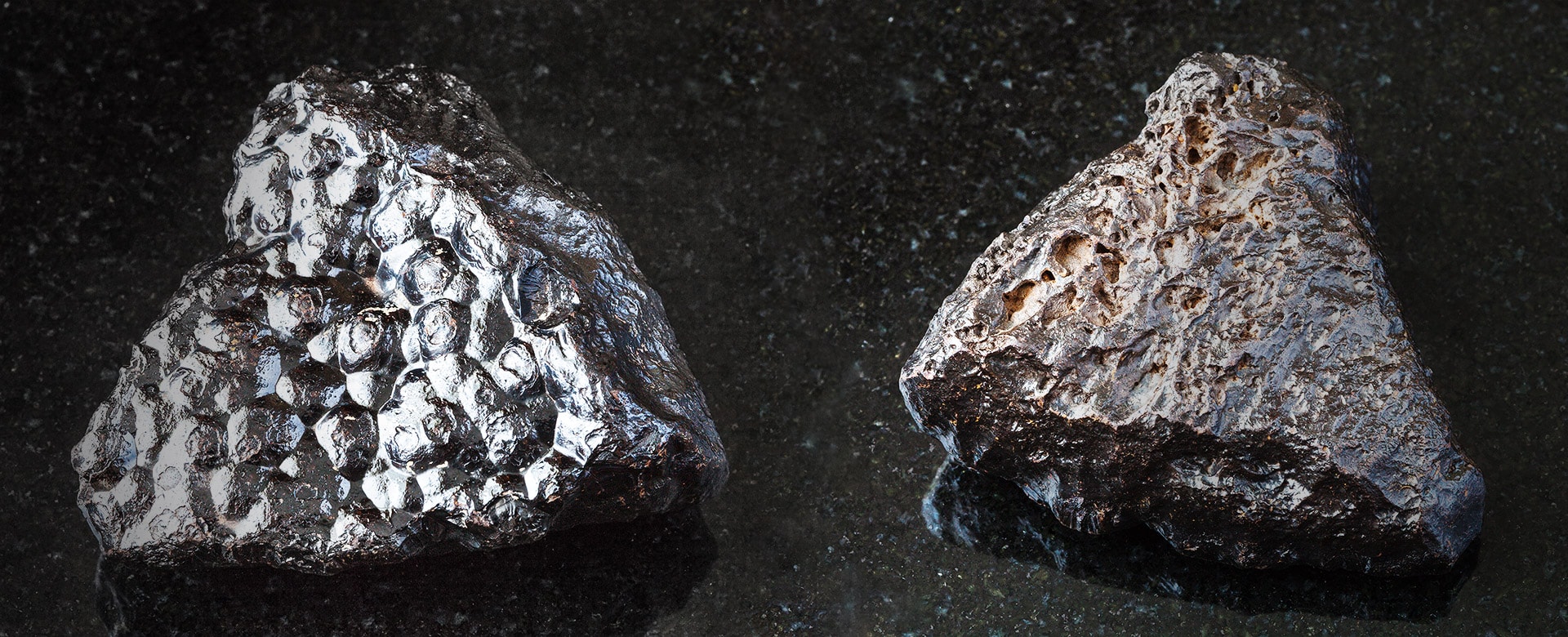Article Highlights
What is Hematite?
Hematite is an iron oxide mineral with the chemical formula Fe₂O₃, known for its captivating beauty, rich history, and intriguing geological properties. Boasting a metallic to earthy luster and a steel-gray to black color, hematite has been used for millennia as a pigment, an ore of iron, and a gemstone. Its reddish-brown streak is a distinguishing feature that sets it apart from other minerals.
Hematite’s diverse range of appearances and structures, from its shimmering, starry skies of Specular Hematite to its delicate, floral arrangements of Iron Rose Hematite, have made it a popular choice for collectors, artists, and enthusiasts.
Geological Properties of Hematite: Unraveling the Mysteries of this Iron-Clad Mineral
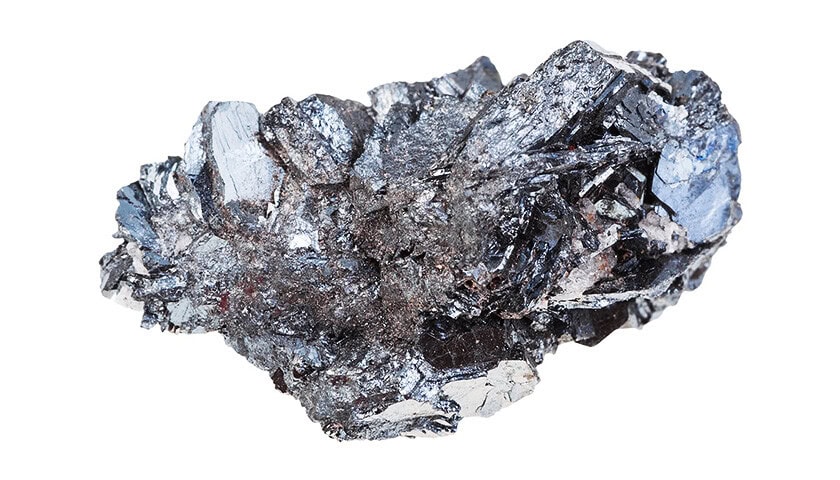
Crystal Structure
Hematite crystallizes in the trigonal crystal system, which is characterized by three-fold rotational symmetry and three equal-length axes that lie in a single plane. The mineral forms a variety of crystal habits, including tabular, bladed, and botryoidal, reflecting its diverse range of appearances and structures.
At the atomic level, hematite’s crystal structure consists of layers of iron (Fe) atoms surrounded by oxygen (O) atoms, arranged in a hexagonal pattern. This arrangement results in the mineral’s characteristic metallic luster, as well as its relatively high density and hardness.
Physical Properties
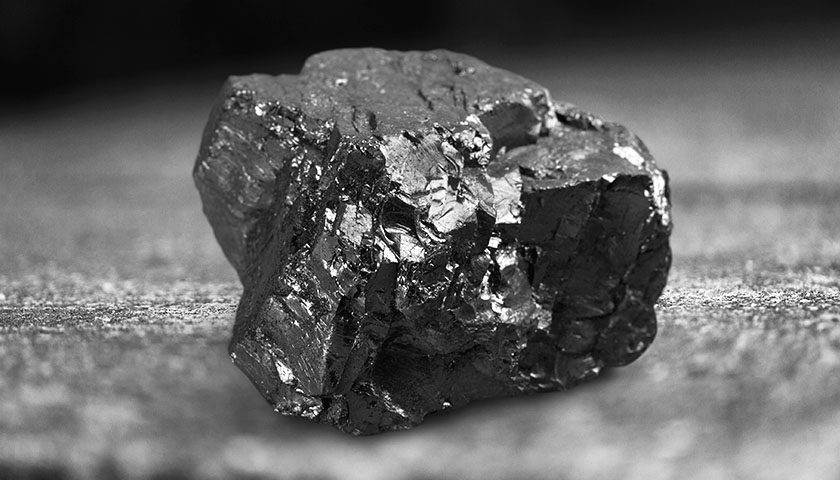
Hematite is a dense, relatively hard mineral with several key physical properties that contribute to its captivating appearance and usefulness. These properties include:
- Color: Hematite’s color ranges from steel-gray to black, with some varieties exhibiting deep red or reddish-brown hues. The mineral’s reddish-brown streak is a distinguishing feature that sets it apart from other minerals.
- Luster: Hematite exhibits a metallic to earthy luster, depending on its crystal habit and surface texture. This luster contributes to the mineral’s striking beauty and makes it a popular choice for jewelry and decorative items.
- Hardness: Hematite has a hardness of 5 to 6 on the Mohs scale, making it relatively durable and resistant to scratches and abrasions. This hardness also contributes to the mineral’s usefulness as an abrasive and polishing agent.
- Density: Hematite is a dense mineral, with a specific gravity of approximately 5.3. This density reflects the mineral’s high iron content and contributes to its weighty, substantial feel in hand.
- Cleavage and Fracture: Hematite has no distinct cleavage planes, meaning it does not break along smooth, flat surfaces. Instead, the mineral fractures in an uneven, irregular manner, which can create jagged or rough edges.
- Magnetism: While hematite is not strongly magnetic, it can exhibit weak magnetism when exposed to a strong external magnetic field. Some varieties of hematite, such as martite, are more magnetic due to their formation through the alteration of magnetite.
Formation Environments
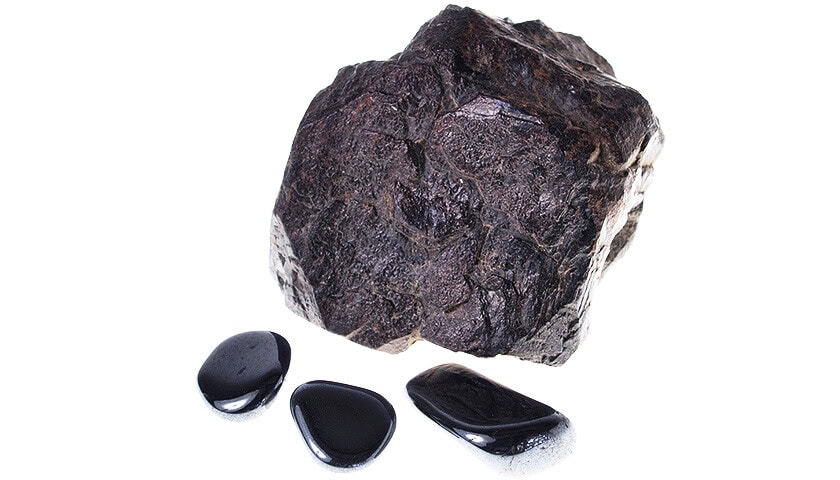
Hematite forms in a variety of geological settings, reflecting its diverse range of appearances and structures. Some of the key environments in which hematite forms include:
- Igneous Rocks: Hematite can occur as an accessory mineral in various types of igneous rocks, such as granite and basalt. It forms during the cooling and crystallization of magma, often alongside other iron oxide minerals like magnetite.
- Sedimentary Rocks: Hematite is commonly found in sedimentary rocks, such as iron formations and banded iron formations (BIFs). These rocks form when iron-rich minerals precipitate from water and accumulate in layers on the Earth’s surface. Over time, these layers can become compacted and cemented together, forming sedimentary rocks rich in hematite.
- Metamorphic Rocks: Hematite can also form in metamorphic rocks as a result of the recrystallization and reorganization of pre-existing iron-bearing minerals under high temperature and pressure. This process can give rise to unique hematite varieties, such as Iron Rose Hematite, which forms in metamorphic rocks and hydrothermal veins.
- Hydrothermal Veins: Hematite can form in hydrothermal veins, where mineral-rich fluids circulate through fractures and fissures in the Earth’s crust. These fluids can precipitate a variety of minerals, including hematite, as they cool and interact with the surrounding rock.
- Weathering and Oxidation: Hematite can also form through the weathering and oxidation of other iron-bearing minerals, such as magnetite or pyrite. This process involves the chemical alteration of the original mineral, as well as the physical breakdown of the rock into smaller fragments. The end result is the formation of hematite, which often exhibits a distinctive red color due to the presence of iron oxides.
Varieties of Hematite
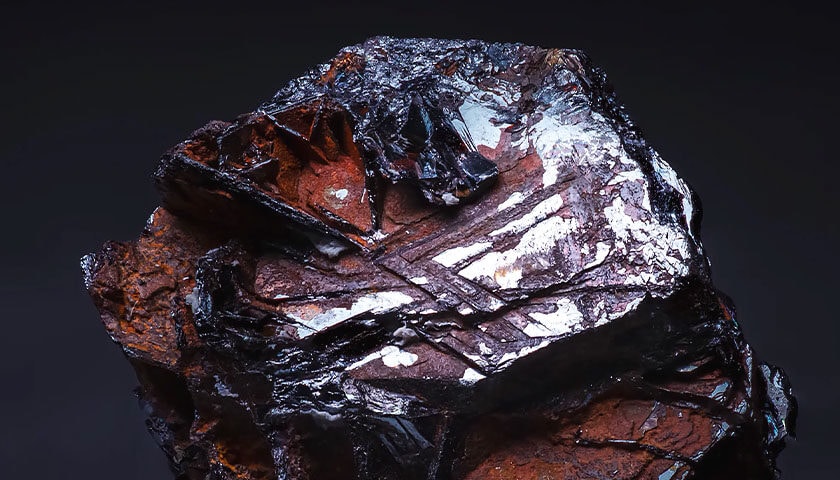
1. Rainbow Hematite: A Kaleidoscope of Color in the Mineral Kingdom
Have you ever been captivated by a stone that seems to have captured the very essence of a rainbow? If not, then let me introduce you to the enchanting world of Rainbow Hematite, a mineral that has the power to leave you in awe with its vibrant, iridescent colors.
Formation and Geological Properties
Rainbow Hematite, or “iridescent hematite,” is a variety of the iron oxide mineral hematite (Fe2O3). It’s most known for its stunning display of iridescent colors, which result from the interference of light waves on the thin layers of hematite and other minerals present within the stone. This optical phenomenon is known as thin-film interference and is responsible for the mesmerizing color play that sets Rainbow Hematite apart from its more common, metallic-gray counterpart.
Rainbow Hematite forms primarily in banded iron formations (BIFs), which are sedimentary rocks that consist of alternating layers of iron-rich minerals (such as hematite) and silica-rich minerals (such as chert or jasper). These rock formations are typically found in ancient geological settings, with some dating back to over 2.5 billion years ago.
The process of Rainbow Hematite formation begins when the original hematite layers are subjected to intense heat and pressure. This causes the minerals to recrystallize, forming a microcrystalline structure that results in the unique iridescent quality of the stone.
Rainbow Hematite is characterized by its metallic luster and distinctive reddish-brown streak. It has a hardness of 5.5 to 6.5 on the Mohs scale, making it a relatively hard and durable mineral. Its crystal system is trigonal, but the iridescent variety often displays a botryoidal habit, where the mineral forms rounded, grape-like clusters.
The most striking feature of Rainbow Hematite, however, is its stunning color palette. The stone can exhibit a wide array of colors, ranging from deep blues, purples, and greens to bright reds, oranges, and yellows. Each specimen is truly unique, as the distribution and intensity of colors can vary greatly.
History and Lore
Rainbow Hematite has a rich history and has been treasured by various cultures throughout the ages. Its vibrant colors and mesmerizing appearance have inspired countless stories, myths, and legends. Let’s explore the historical significance and lore associated with this captivating mineral.
The use of hematite, including the iridescent variety, dates back to prehistoric times. Evidence of hematite’s use as a pigment can be found in ancient cave paintings, where the powdered mineral was mixed with animal fat to create a reddish-brown paint. The oldest known example of hematite use as a pigment is from the Blombos Cave in South Africa, dating back to approximately 100,000 years ago.
In ancient Rome, hematite was believed to have protective properties and was often used as a talisman by warriors. It was thought that the stone could protect its wearer from harm and even bestow invincibility. While the iridescent variety may not have been as commonly used for this purpose, it’s possible that Rainbow Hematite was considered an even more powerful talisman due to its striking appearance.
The iridescent colors of Rainbow Hematite have often been associated with celestial phenomena. In some cultures, the stone has been thought to contain the essence of the cosmos or to be a physical manifestation of a rainbow itself. The vibrant, shifting colors have inspired legends of Rainbow Hematite having a connection to the heavens, being a bridge between the earthly realm and the divine.
2. Red Hematite: The Fiery Jewel of the Mineral Kingdom
Step into the world of Red Hematite, a captivating mineral that boasts a fiery, rich color, and an equally fascinating history. This remarkable gemstone has been cherished for its stunning beauty, as well as its intriguing geological properties and associated lore. Join us as we explore the wonders of Red Hematite, delving into its formation, properties, history, and related beliefs.
Formation and Geological Properties
Red Hematite is a variety of the iron oxide mineral hematite (Fe2O3), which is known for its characteristic reddish-brown color. While hematite typically presents in metallic gray or black, Red Hematite stands out for its bold and vibrant red hue. This striking coloration is the result of the presence of fine-grained hematite particles, which give the mineral its distinctive appearance.
Red Hematite forms in a range of geological environments, from sedimentary deposits to hydrothermal veins and metamorphic rocks. It is often found in association with other iron-bearing minerals, such as magnetite, limonite, and siderite. The vivid red color of Red Hematite is primarily due to the presence of hematite particles in a fine-grained, earthy form known as “red ochre.”
Red Hematite is a trigonal mineral with a metallic to earthy luster. It has a hardness of 5 to 6 on the Mohs scale, which indicates a moderate level of durability. The stone is opaque, with a characteristic red to reddish-brown streak that distinguishes it from other hematite varieties.
One of the most captivating aspects of Red Hematite is its rich and intense color. The stone displays a stunning range of red hues, from warm, earthy tones to fiery shades that evoke the glow of molten lava. This mineral’s dramatic appearance has made it a prized possession for collectors, artists, and enthusiasts alike.
History and Lore
Throughout human history, Red Hematite has played a significant role in various cultures and traditions. From ancient cave paintings to sacred rituals, this vibrant mineral has captivated our ancestors with its brilliant color and enchanting properties.
Red Hematite, in the form of red ochre, has been used as a pigment for tens of thousands of years. Evidence of its use can be found in some of the world’s oldest cave paintings, such as those in the Lascaux caves in France, where the mineral’s rich red hue was used to create vivid images of animals and other scenes from the prehistoric world.
3. Specular Hematite: A Glimpse into a Starry Night
Specular Hematite, also known as specularite, is a stunning variety of hematite that boasts a shimmering, silvery surface reminiscent of a starry night sky. This mesmerizing appearance is due to the presence of tiny, interlocking plate-like hematite crystals that create a highly reflective, metallic luster.
Formation and Properties
Specular Hematite typically forms in high-temperature environments, such as metamorphic rocks and hydrothermal veins. Its unique crystal structure results from the growth of small, tabular hematite crystals that interlock and align to produce a specular, or mirror-like, surface.
This variety of hematite exhibits a metallic luster and a hardness of 5 to 6 on the Mohs scale, making it relatively durable. Specular Hematite’s characteristic steel-gray to black color and reddish-brown streak make it easily distinguishable from other minerals.
4. Botryoidal Hematite: Nature’s Own Grape Clusters
Botryoidal Hematite, sometimes referred to as “kidney ore,” is a variety of hematite that forms rounded, grape-like clusters or masses. This intriguing structure gives the mineral a unique, organic appearance that sets it apart from other hematite varieties.
Formation and Properties
Botryoidal Hematite forms when hematite crystals grow in a radiating, spherical pattern, creating rounded, overlapping masses. This distinctive growth habit can occur in a variety of geological settings, including sedimentary deposits and hydrothermal veins.
This hematite variety is characterized by its metallic luster, deep gray to black color, and reddish-brown streak. Botryoidal Hematite has a hardness of 5 to 6 on the Mohs scale and often displays a smooth, polished surface due to the rounded nature of its crystal growth.
A Treasure for Collectors
Botryoidal Hematite’s unique, grape-like appearance makes it a highly prized specimen among collectors and enthusiasts. The mineral’s organic form and lustrous surface create a visually striking contrast with its metallic, iron-rich composition, making it a fascinating and appealing addition to any collection.
5. Oolitic Hematite: A Symphony of Spheres
Oolitic Hematite is a remarkable variety of hematite that features an unusual, spherical structure. The mineral consists of small, rounded grains, or “oolites,” which give it a distinctive, granular texture.
Formation and Properties
Oolitic Hematite forms in sedimentary environments, where iron-rich waters precipitate hematite around small nuclei, such as sand grains or shell fragments. Over time, these hematite layers accumulate and create the characteristic oolitic structure.
This variety of hematite exhibits a metallic to earthy luster, with a deep red to reddish-brown color. Oolitic Hematite has a hardness of 5 to 6 on the Mohs scale, and its granular texture sets it apart from other hematite varieties.
A Geological Curiosity
Oolitic Hematite’s intriguing appearance and unique formation process make it a geological curiosity that captivates collectors and enthusiasts. Its spherical, granular texture and rich coloration create a visual feast that showcases the beauty and diversity of the mineral kingdom.
6. Iron Rose Hematite: Nature’s Floral Masterpiece
Iron Rose Hematite is a breathtaking variety of hematite that forms in elegant, rose-like clusters of flat, bladed crystals. This delicate, floral structure gives the mineral an enchanting, ethereal quality that belies its iron-rich composition.
Formation and Properties
Iron Rose Hematite forms in metamorphic rocks and hydrothermal veins, where the mineral crystallizes in a unique, rose-like arrangement of flat, bladed crystals. These crystals radiate outwards from a central point, creating the appearance of a blooming flower.
This hematite variety is characterized by its metallic luster, steel-gray to black color, and reddish-brown streak. Iron Rose Hematite has a hardness of 5 to 6 on the Mohs scale and is highly valued for its extraordinary crystal habit.
An Artistic Inspiration
The captivating beauty of Iron Rose Hematite has made it a favorite among collectors, artists, and enthusiasts. Its graceful, floral form and shimmering surface evoke a sense of wonder and delight, making it a prized specimen that showcases the artistic prowess of nature.
7. Hematine: The Hematite Lookalike
Hematine, also known as magnetic hematite or imitation hematite, is a man-made material that closely resembles natural hematite in appearance. Although not a genuine variety of hematite, it has become a popular alternative in the world of jewelry and decorative items.
Formation and Properties
Hematine is a synthetic material composed of various iron oxides, including magnetite (Fe3O4). It is produced through a process that involves heating, cooling, and grinding these iron oxides to create a fine, hematite-like powder. This powder is then compressed and shaped into various forms, such as beads, cabochons, or figurines.
Hematine closely mimics the appearance of natural hematite, exhibiting a metallic luster and a steel-gray to black color. It is often magnetized, which sets it apart from genuine hematite, as natural hematite is only weakly magnetic.
A Hematite-Inspired Alternative
While Hematine may not be a true variety of hematite, its striking resemblance to the natural mineral has made it a popular alternative for those seeking the beauty of hematite at a more affordable price. Hematine’s magnetic properties also make it an interesting and engaging choice for jewelry and decorative items, capturing the imagination of collectors and enthusiasts alike.
8. Kidney Ore Hematite: A Mineral with an Organic Touch
While we’ve touched on Botryoidal Hematite earlier, Kidney Ore Hematite is another term for the same intriguing variety. This fascinating form of hematite is characterized by its rounded, organic shapes that resemble clusters of grapes or kidneys.
Formation and Properties
Kidney Ore Hematite forms when hematite crystals grow in a radiating pattern, creating overlapping, rounded masses. This captivating growth habit results in a mineral with a smooth, polished surface that boasts a metallic luster and deep gray to black color.
An Earthy Treasure
Kidney Ore Hematite’s unique, organic appearance has made it a sought-after specimen among collectors and enthusiasts. Its distinctive form and lustrous surface create a visually striking contrast that highlights the beauty of the mineral kingdom.
9. Martite: A Pseudomorph with a Twist
Martite is a fascinating variety of hematite that forms through a process known as pseudomorphism. This intriguing mineral occurs when hematite replaces the iron oxide mineral magnetite, maintaining the original crystal shape of the magnetite while altering its chemical composition.
Formation and Properties
Martite forms when the mineral magnetite is altered through oxidation, a process that replaces its original chemical composition with that of hematite. This transformation results in a mineral with the external crystal shape of magnetite but the properties of hematite, including its metallic luster, steel-gray to black color, and reddish-brown streak.
A Mineral Chameleon
Martite’s unique formation process and intriguing crystal habit make it a captivating variety of hematite that showcases the dynamic nature of the mineral world. Its chameleon-like qualities have made it a prized specimen among collectors and enthusiasts alike.
10. Hematite Breccia: A Mosaic of Mineral Fragments
Hematite Breccia is a fascinating rock composed of angular fragments of hematite cemented together by another mineral, such as quartz or calcite. This variety of hematite showcases a stunning mosaic-like appearance that highlights the beauty of hematite in a new and exciting way.
Formation and Properties
Hematite Breccia forms when fragments of hematite are cemented together by another mineral, creating a cohesive rock. This unique composition results in a mineral with a distinctive, mosaic-like texture that showcases the beauty of hematite in a striking and unconventional manner.
A Geological Masterpiece
The captivating appearance of Hematite Breccia has made it a highly sought-after specimen among collectors and enthusiasts. Its stunning, mosaic-like texture and rich coloration create a visual feast that showcases the beauty and diversity of the mineral kingdom.
11. Hematite Stalactite: A Dripstone Marvel
Hematite Stalactite is a rare and captivating variety of hematite that forms in elongated, cylindrical shapes reminiscent of icicles or stalactites. This unique growth habit gives the mineral a distinctive, sculptural appearance that sets it apart from other hematite varieties.
Formation and Properties
Hematite Stalactite forms in cave environments, where hematite-rich water drips from the ceiling and slowly precipitates the mineral over time. This process results in elongated, cylindrical formations that resemble stalactites. Hematite Stalactite exhibits a metallic luster, steel-gray to black color, and reddish-brown streak, much like other hematite varieties.
A Geological Wonder
The intriguing, sculptural appearance of Hematite Stalactite has made it a highly prized specimen among collectors and enthusiasts. Its distinctive growth habit and captivating form showcase the incredible diversity and beauty of the mineral kingdom, making it a true geological wonder.
History and Lore of Hematite: The Blood Stone of Ancient Civilizations
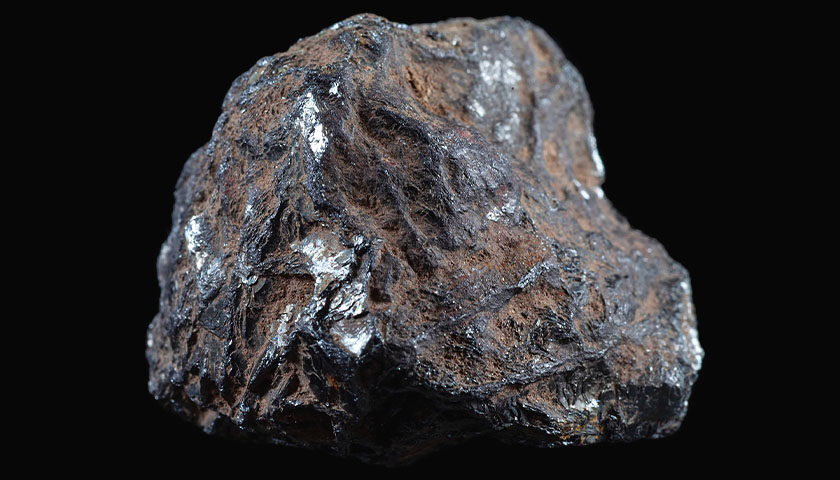
Hematite, a mineral with a rich history dating back to prehistoric times, has captivated the minds of humans for millennia. Often referred to as the “blood stone,” hematite has been used for a wide range of purposes: from medicinal treatments to pigment for art and even as a symbol of power in ancient rituals. This chapter will take you on a journey through the history and lore of hematite, the powerful mineral that has played a vital role in the development of human culture and society.
The Discovery and Etymology of Hematite
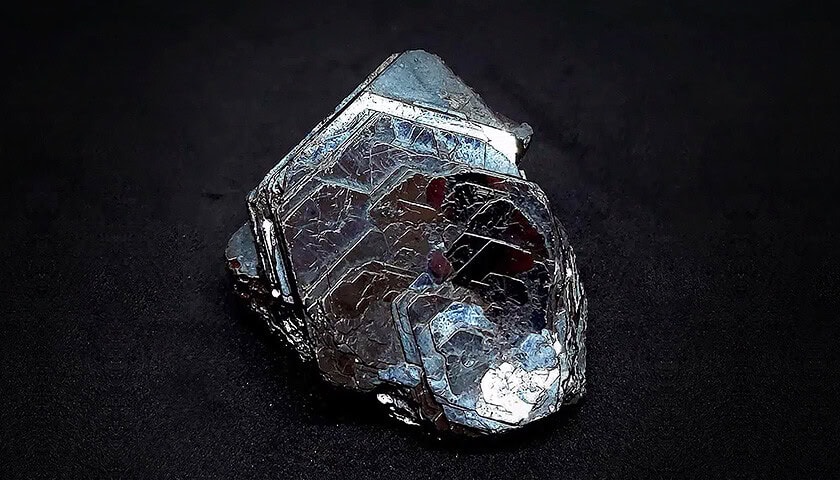
Originally known as “Haematite,” hematite was officially discovered in 1773 by Jean Baptiste Rome de l’Isle, who changed the name by removing the first “e.” The mineral’s name is derived from the Greek word for blood, “haima,” due to the red color it turns when ground to a fine powder.
Hematite’s Role in Earth’s Formation
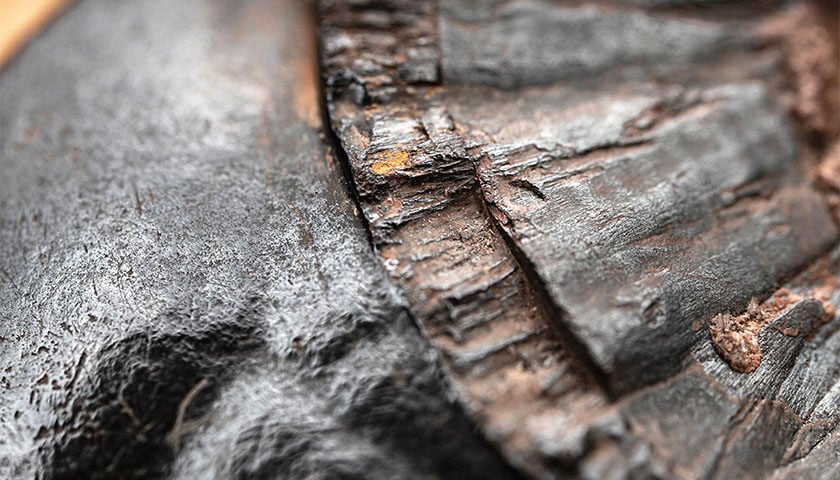
Hematite has a unique connection to the formation of life on Earth. Approximately 3.4 billion years ago, cyanobacteria started performing the earliest known photosynthesis. At this time, Earth’s ocean contained a significant amount of iron in suspension.
The cyanobacteria released oxygen through photosynthesis, which bonded with the iron, causing it to sink to the ocean floor. This process continued until the ocean was cleared of iron, allowing the oxygen to be released as gas – a crucial step in creating Earth’s atmosphere.
Hematite’s Prehistoric Uses
Hematite, also known as red ochre, is thought to be one of the earliest minerals used by humans, dating back 164,000 years ago. Excavations in South Africa have uncovered artifacts demonstrating deliberate carving and milling of hematite, dating back 75,000 years ago.
Early humans used hematite for various purposes, including as a pigment, glue, and tanning agent. It is speculated that it may have also been taken medicinally or used as a sunscreen. Hematite residues have been found in graves dating back 80,000 years, suggesting that the mineral played a significant role in ancient burial practices.
Hematite and the Ancient Greeks
The ancient Greeks associated iron, a key component of hematite, with the god Aries (Mars in the Roman pantheon), the god of war. Soldiers would rub hematite over their bodies before battle, possibly to invoke the protection of Aries or to startle their enemies with their red-tinted skin.
George Frederick Kunz, in his book The Curious Lore of Precious Stones (1913), suggests that the use of hematite was intended to make soldiers invulnerable. However, this idea remains speculative, and no definitive evidence exists to support it.
Hematite’s Medicinal Uses
Throughout history, hematite has been used for its medicinal properties, particularly for staunching blood flow in wounds. Anselmus Di Boot, the court physician to Rudolph II of Germany, noted this use in 1609.
Hematite’s astringent qualities aid coagulation, making it an effective wound dressing. The Ancient Egyptians prescribed hematite for this purpose. Pliny the Elder also cited its use for stopping excessive menstrual bleeding and treating blood disorders, often through ingestion.
Hematite Healing Properties
- Hematite is believed to offer a wealth of physical, emotional, and spiritual benefits, providing powerful healing and transformative energies.
- The mineral’s deep, red color and high iron content have inspired countless myths and legends, imbuing hematite with a sense of mystery and enchantment.
- Hematite’s grounding and balancing properties can help to restore equilibrium and harmony, making it an ideal choice for meditation and energy work.
Step into the enchanting world of hematite healing properties, where ancient wisdom and modern understanding come together to reveal the transformative and protective powers of this captivating iron oxide mineral.

With its deep, red color, metallic sheen, and high iron content, hematite has long been revered for its healing properties and spiritual significance.
In this comprehensive guide, we’ll explore the physical, emotional, and spiritual benefits of hematite, weaving together scientific and mythological information to create an engaging and accessible narrative that encourages readers to explore the many uses of this iron-clad gemstone in their lives.
Physical Benefits of Hematite: Strength, Vitality, and Grounding
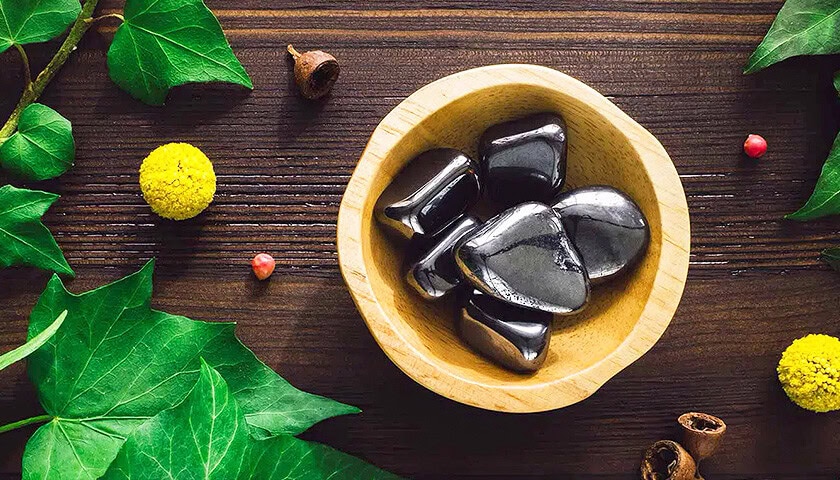
Hematite’s high iron content and grounding properties have earned it a reputation as a stone of strength, vitality, and physical well-being. The mineral’s ability to restore balance and harmony within the body is believed to offer a range of physical benefits, including:
Boosting Energy Levels and Vitality
Hematite’s rich, red color and high iron content have led many to associate the mineral with the life-giving power of blood, making it a popular choice for those looking to increase their energy levels and vitality. By helping to balance the body’s energy flow, hematite is believed to promote a sense of invigoration and renewed strength, supporting the body’s natural ability to heal and regenerate.
Grounding and Centering
The dense and heavy nature of hematite makes it an excellent grounding stone, helping to anchor the body’s energy and create a strong connection to the Earth. This grounding effect can help to stabilize and balance the body’s energy flow, reducing feelings of scattered or uncontrolled energy and promoting a sense of calm and centeredness.
Support for the Blood and Circulation
Hematite’s association with blood and its iron content have led many to believe that the mineral can help support healthy blood and circulation. Hematite is thought to help stimulate the absorption of iron, a vital component of hemoglobin, the protein responsible for transporting oxygen in the blood. By promoting healthy blood and circulation, hematite may contribute to overall physical well-being and vitality.
Emotional Benefits of Hematite: Courage, Confidence, and Emotional Balance
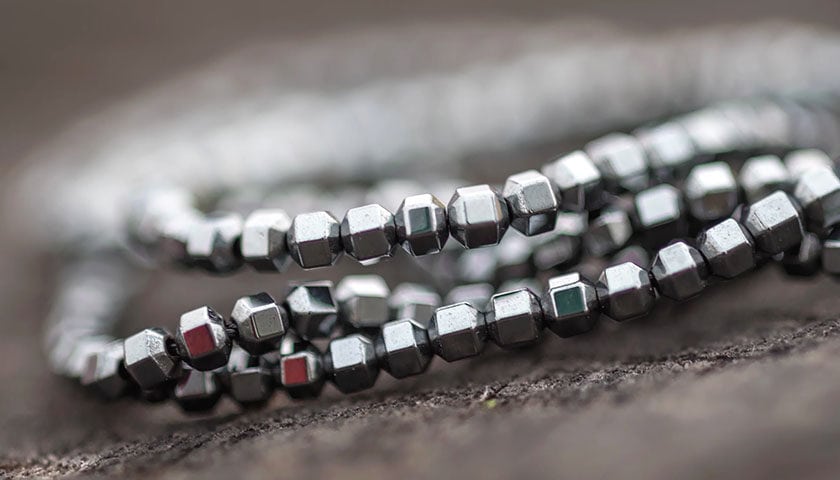
Hematite’s healing properties extend beyond the physical realm, with the mineral believed to offer a range of emotional benefits as well. Hematite’s grounding and balancing properties can help to restore emotional equilibrium, promoting feelings of courage, confidence, and emotional balance.
Encouraging Courage and Confidence
The deep, red color of hematite has long been associated with the warrior spirit, with ancient civilizations believing that the mineral could imbue its wearer with the courage and fortitude needed to face life’s challenges. By helping to ground and center the emotions, hematite is thought to promote feelings of self-confidence and personal strength, empowering individuals to face their fears and embrace their inner warrior.
Restoring Emotional Balance
Hematite’s ability to balance and harmonize the emotions makes it an ideal choice for those seeking to restore emotional equilibrium. The mineral’s grounding properties can help to soothe feelings of anger, frustration, and resentment, promoting a sense of calm and centeredness. By restoring balance to the emotional body, hematite can help to foster a greater sense of inner peace and emotional stability, paving the way for personal growth and transformation.
Releasing Negative Energy
Hematite’s protective and grounding properties can also help to release negative energy and emotions, including anxiety, stress, and self-doubt. The mineral’s ability to absorb and transmute negative energy is believed to support emotional healing, allowing individuals to let go of limiting beliefs and embrace a more positive outlook on life.
Spiritual Benefits of Hematite: Connection, Transformation, and Protection
Hematite’s rich history and spiritual significance have made it a popular choice for those seeking to deepen their connection to the spiritual realm.
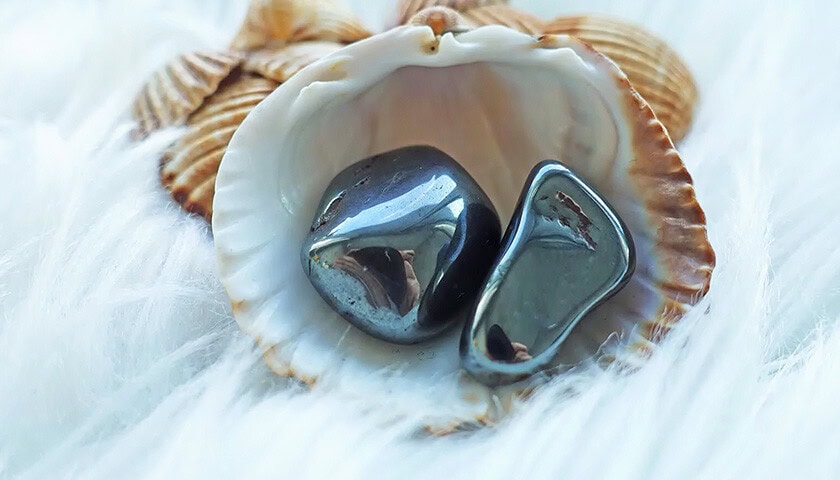
The mineral’s grounding, protective, and transformative properties can help to support spiritual growth and development, offering a range of benefits, including:
Enhancing Spiritual Connection
Hematite’s grounding properties can help to strengthen the connection between the physical and spiritual realms, promoting a greater sense of spiritual awareness and understanding. By anchoring the spirit within the physical body, hematite can help to deepen meditation and facilitate communication with the higher self and spiritual guides.
Supporting Transformation and Growth
Hematite’s transformative energies can help to facilitate personal and spiritual growth, encouraging individuals to release old patterns and embrace new ways of being.
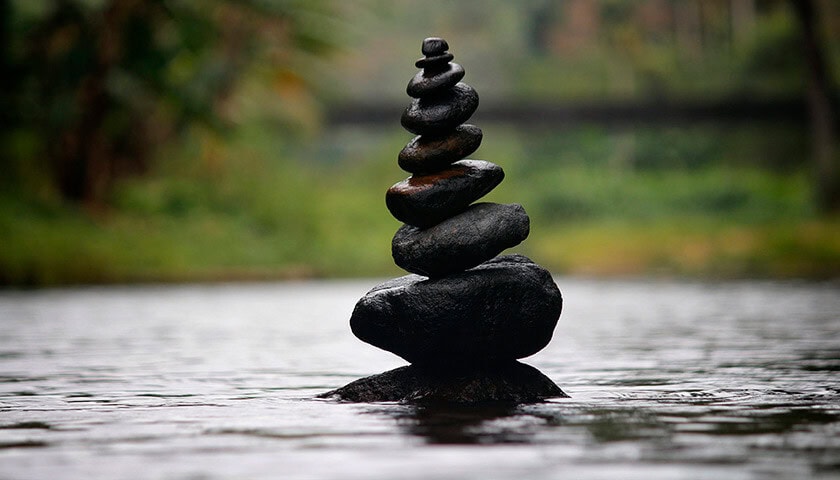
he mineral’s ability to balance and harmonize the energies of the mind, body, and spirit can pave the way for profound personal transformation, empowering individuals to step into their true power and potential.
Offering Spiritual Protection
Hematite’s protective properties have long been revered in spiritual and metaphysical circles, with the mineral believed to offer powerful shielding against negative energy and psychic attack. By creating a strong energetic barrier around the aura, hematite can help to safeguard the spirit and promote a sense of safety and security on the spiritual journey.

As we’ve explored the many healing properties of hematite, it becomes clear that this captivating mineral offers a wealth of physical, emotional, and spiritual benefits. From promoting strength and vitality to offering protection and spiritual connection, hematite’s unique energies can help to transform, balance, and heal on multiple levels.
With its rich history, diverse range of appearances, and enigmatic lore, hematite is a gemstone that invites exploration and discovery. Whether you’re drawn to the mineral for its captivating beauty or its healing properties, there’s no denying the allure and power of this iron-clad mineral.
Hematite Meaning and Energy: Unlocking the Power of this Enigmatic Iron Mineral
- Hematite is a powerful grounding and protective stone, believed to balance and harmonize the body, mind, and spirit.
- The mineral’s deep, red color and high iron content have inspired countless myths and legends, imbuing hematite with a sense of mystery and enchantment.
- Hematite’s unique energies can help to support physical, emotional, and spiritual healing, making it a popular choice for crystal healing enthusiasts.
Delve into the captivating world of hematite, a powerful and mysterious iron oxide mineral revered for its grounding, protective, and transformative energies.
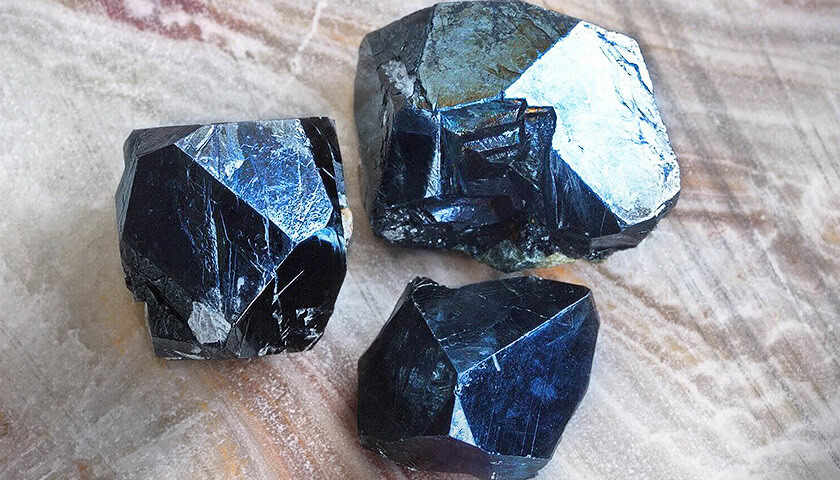
Hematite’s deep, red color, metallic sheen, and rich lore have earned it a special place in the hearts of crystal healing enthusiasts, with the mineral’s unique energies offering a wealth of benefits for those seeking to balance and harmonize the body, mind, and spirit.
Hematite: A Stone of Balance and Protection
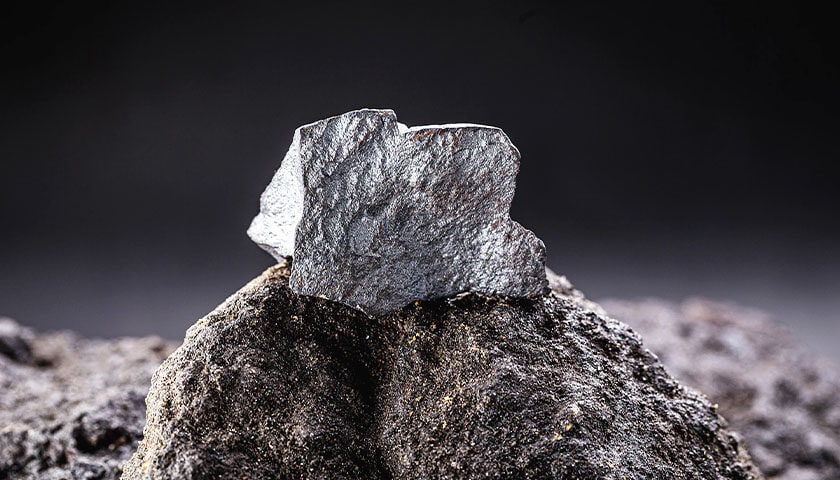
Hematite, an iron oxide mineral with a deep, red color and metallic sheen, has long been associated with balance, protection, and transformation. The mineral’s high iron content has inspired countless myths and legends, with hematite believed to possess powerful grounding and protective properties that can help to shield the body, mind, and spirit from negative energy and psychic attack.
Grounding Energy
The dense and heavy nature of hematite makes it an excellent grounding stone, helping to anchor the body’s energy and create a strong connection to the Earth. This grounding effect can help to stabilize and balance the body’s energy flow, reducing feelings of scattered or uncontrolled energy and promoting a sense of calm and centeredness.
Protective Properties
Hematite’s protective properties are rooted in its ability to absorb and transmute negative energy, shielding the aura from psychic attack and environmental stressors. By creating a strong energetic barrier around the body, hematite can help to safeguard the spirit and promote a sense of safety and security on the spiritual journey.
The Enchantment of Hematite: A Journey Through Myth and Legend
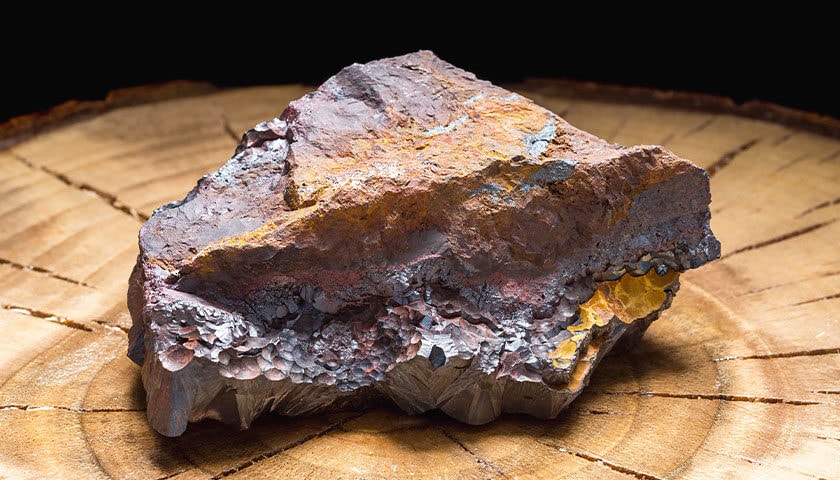
Hematite’s deep, red color and high iron content have inspired a rich tapestry of myths and legends, imbuing the mineral with a sense of enchantment and mystery. From ancient tales of warrior courage to modern beliefs in the stone’s healing properties, hematite’s captivating allure has captured the imagination of countless generations.
The Blood of the Earth
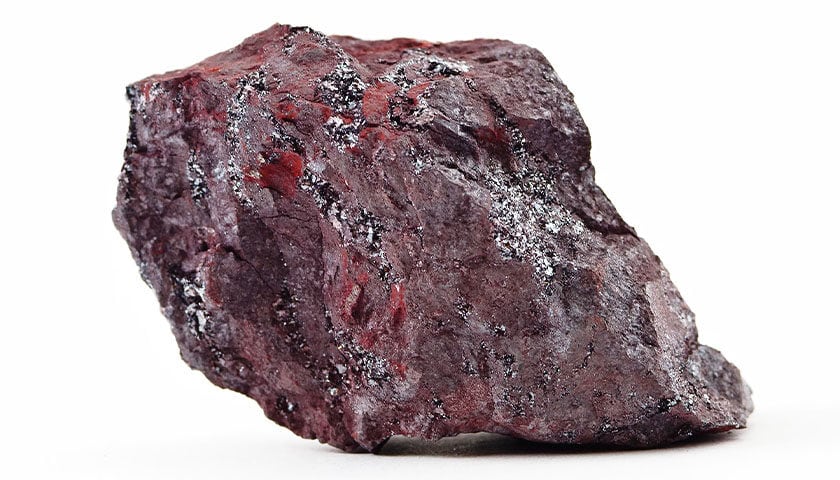
One of the most enduring myths surrounding hematite is the belief that the mineral represents the “blood of the Earth,” with its deep, red color symbolizing the life-giving power of the planet. This belief is rooted in the observation that when hematite is ground into a fine powder, it produces a vivid, red pigment that resembles dried blood. This association with the Earth’s lifeblood has given hematite a reputation as a healing and transformative stone, with the mineral believed to possess the power to cleanse and purify the body and spirit.
Hematite and the Warrior Spirit
Hematite’s association with the warrior spirit can be traced back to the ancient Greeks, who believed that the mineral could help balance the warrior’s fierce nature with a sense of calm and tranquility. The Greeks associated hematite with the god Ares, the god of war and courage, and believed that the mineral could help instill courage and fortitude in those who wore it.
As we’ve explored the meaning and energy of hematite, it becomes clear that this enigmatic iron oxide mineral offers a wealth of grounding, protective, and transformative properties. The captivating blend of scientific and mythological information paints a vivid picture of hematite’s unique energies, inviting readers to explore the many benefits of this captivating gemstone in their lives.
Hematite in Modern Crystal Healing
In modern crystal healing, hematite continues to be prized for its grounding, balancing, and protective properties. The mineral’s ability to absorb and transmute negative energy makes it a popular choice for those seeking to release old patterns and embrace new ways of being. By promoting harmony between the body, mind, and spirit, hematite can help to facilitate personal and spiritual growth, empowering individuals to step into their true power and potential.
Embracing the Power of Hematite in Your Life
Whether you’re drawn to hematite for its captivating beauty, rich lore, or healing properties, there’s no denying the allure and power of this enigmatic mineral. By incorporating hematite into your daily life, meditation practice, or energy work, you can harness the stone’s grounding and protective energies, promoting a sense of balance and harmony in all aspects of your life.
To begin exploring the benefits of hematite, consider wearing the mineral as jewelry, carrying it in your pocket, or placing it in your home or workspace. By surrounding yourself with hematite’s powerful energies, you’ll be able to tap into the transformative and protective properties of this captivating gemstone, inviting a sense of balance, protection, and harmony into your life.
As you embark on your journey with hematite, let the enchanting world of myth and legend serve as a guide, inspiring you to unlock the power of this iron-clad mineral and experience the many benefits it has to offer. From grounding and protection to transformation and spiritual growth, hematite’s unique energies can help to support and guide you on your path to healing, self-discovery, and personal evolution.
Hematite Metaphysical Properties: Exploring Chakras and Zodiac Connections
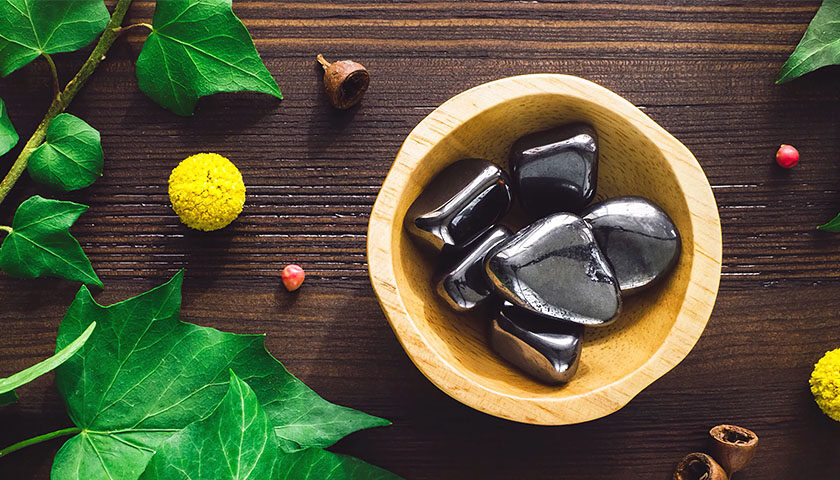
- Hematite is associated with the Root Chakra (Muladhara), promoting grounding, stability, and a sense of security.
- Hematite has a strong connection with the zodiac signs Aries and Aquarius, offering unique benefits for individuals born under these signs.
- The metaphysical properties of hematite can be harnessed through meditation, energy work, and daily wear, providing balance and harmony in one’s life.
Embark on a fascinating journey into the metaphysical properties of hematite, a powerful and mysterious iron oxide mineral revered for its grounding, protective, and transformative energies.
Hematite and Chakras: The Root Chakra (Muladhara)
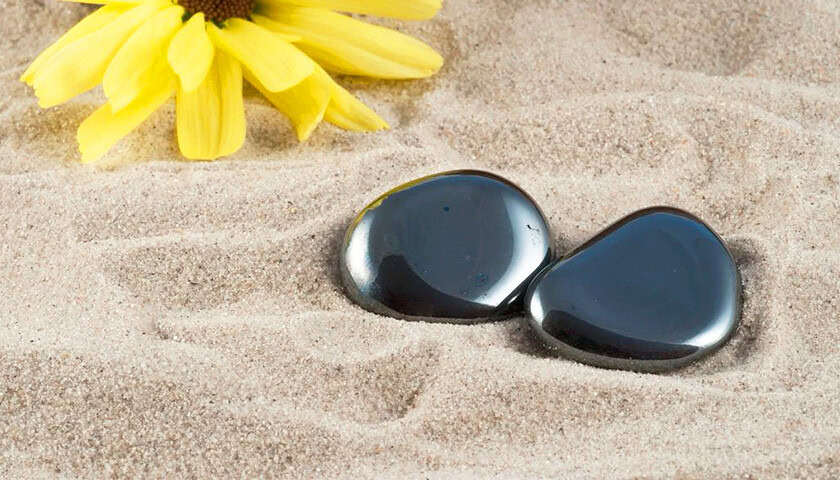
Chakras are energy centers within the body that correspond to different physical, emotional, and spiritual aspects of our lives. Hematite is primarily associated with the Root Chakra, or Muladhara, which is located at the base of the spine and represents our foundation and sense of security.
Grounding and Stability
The Root Chakra is responsible for our sense of grounding and stability, both physically and emotionally. Hematite’s dense, heavy energy helps to anchor the body’s energy and create a strong connection to the Earth, promoting feelings of security and balance. By working with hematite to strengthen and balance the Root Chakra, individuals can cultivate a greater sense of stability, allowing them to navigate the challenges of life with confidence and ease.
Emotional Healing and Security
An imbalance in the Root Chakra can manifest as feelings of insecurity, anxiety, and a lack of emotional stability. Hematite’s grounding and protective properties can help to address these issues, promoting emotional healing and a greater sense of inner peace. By working with hematite to balance the Root Chakra, individuals can foster a stronger sense of security and emotional well-being, paving the way for personal growth and transformation.
Hematite Zodiac Connection: Aries and Aquarius
Hematite has a strong connection with the zodiac signs Aries and Aquarius, offering unique benefits for individuals born under these signs. Through the lens of astrology, we’ll explore how the energies of hematite can complement and enhance the characteristics of Aries and Aquarius, providing support and guidance on their life paths.
Aries: Courage and Confidence
Aries, a fire sign ruled by Mars, the god of war, is known for its courage, passion, and determination. Hematite’s grounding and protective properties can help to balance the fiery energy of Aries, providing a stable foundation for their ambitious pursuits. By working with hematite, Aries individuals can harness the mineral’s energy to foster greater courage and confidence, empowering them to take bold action and overcome obstacles.
Aquarius: Innovation and Independence
Aquarius, an air sign ruled by Uranus, the planet of innovation and change, is known for its independence, creativity, and humanitarian spirit. Hematite’s grounding and stabilizing properties can help to support Aquarius individuals in their quest for innovation and progress, providing a sense of security and stability amidst the winds of change. By working with hematite, Aquarius individuals can cultivate a stronger sense of grounding and balance, allowing them to navigate the challenges of life with grace and resilience.
Harnessing the Metaphysical Properties of Hematite: Embracing Balance and Harmony
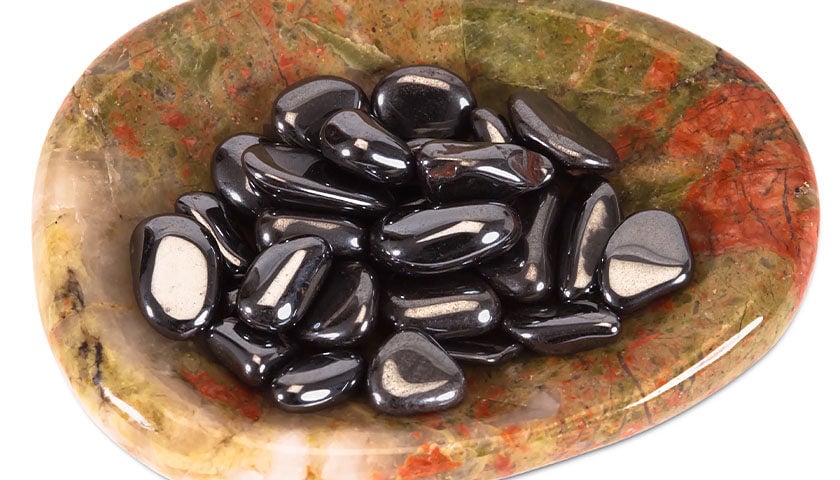
Now that we’ve explored the connection between hematite and chakras, as well as its unique relationship with the zodiac signs Aries and Aquarius, it’s time to discover how to harness the metaphysical properties of this powerful mineral in your daily life.
Meditation and Energy Work
One of the most effective ways to work with hematite is through meditation and energy work. By incorporating hematite into your meditation practice, you can tap into its grounding and protective energies, promoting a sense of balance and harmony throughout your body and energy field.

To begin, simply hold a piece of hematite in your hand or place it near the base of your spine, focusing your attention on the stone’s energy as you breathe deeply and relax into a meditative state.
Daily Wear and Carrying
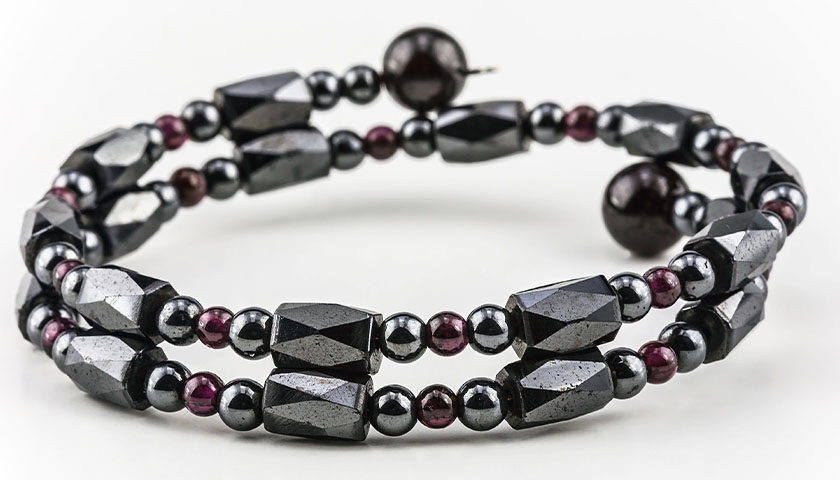
Another way to harness the power of hematite is to wear it as jewelry or carry it with you throughout the day.
By keeping hematite close to your body, you’ll be able to tap into its grounding and protective energies, fostering a sense of balance and stability as you navigate the challenges of daily life.
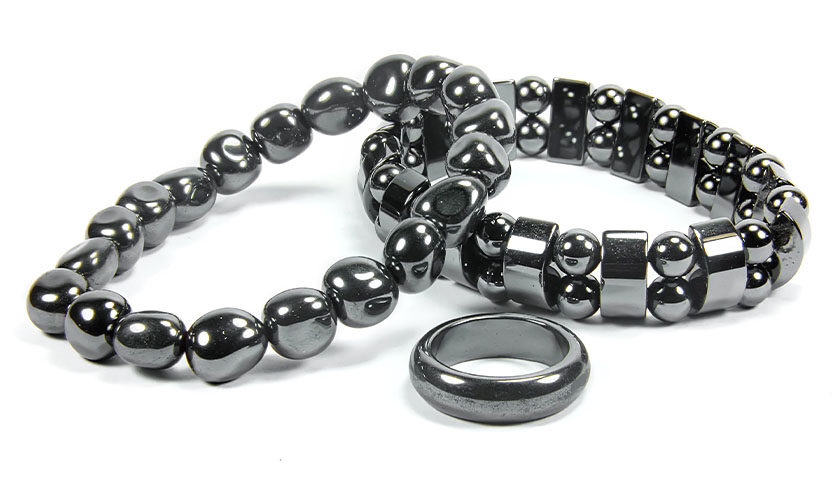
Consider wearing hematite as a pendant, bracelet, or ring, or carrying a small piece in your pocket or purse.
Creating Sacred Space
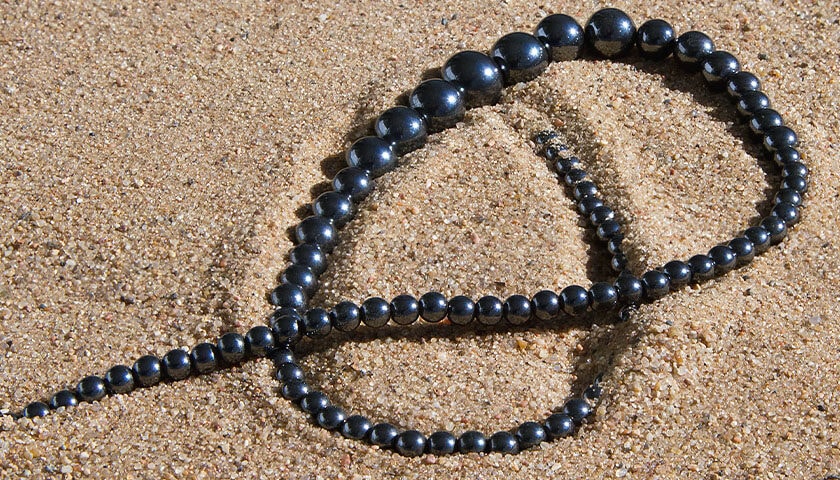
Finally, you can harness the power of hematite by incorporating it into your sacred space or home environment.
Place pieces of hematite around your home or on your altar, allowing the mineral’s grounding and protective energies to permeate the space and promote a sense of balance and harmony. In addition, you can also use hematite in grid formations or crystal layouts, amplifying the stone’s energy and focusing its power on specific intentions or goals.
As you embrace the metaphysical properties of hematite, you’ll be able to cultivate a greater sense of balance and harmony in your life, tapping into the power of this enigmatic mineral to support your physical, emotional, and spiritual well-being. Whether you’re working with hematite to balance your Root Chakra, enhance your connection with your zodiac sign, or simply cultivate a sense of grounding and protection, the mineral’s unique energies can provide a wealth of benefits for those seeking balance, harmony, and transformation on their life journey.
Wearing Hematite Jewelry: A Stylish and Powerful Addition to Your Collection
Hematite jewelry is a stylish and powerful addition to any collection, offering a versatile range of options for incorporating the mineral’s grounding and protective properties into your daily life. Whether you choose to wear a hematite bracelet, necklace, ring, pendant, earrings, or experiment with hematite beads in your custom creations, you’ll be able to enjoy the beauty and power of this remarkable gemstone.
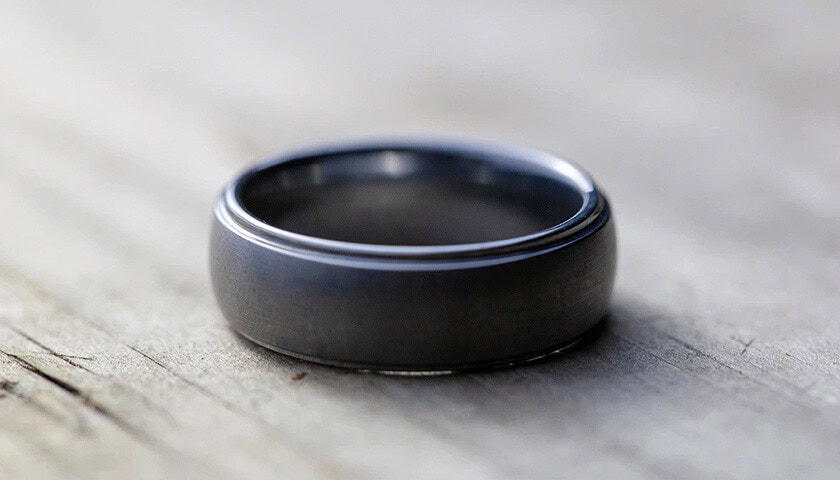
I understand the profound impact that wearing hematite jewelry can have on both your personal style and overall well-being. Embrace the captivating allure of hematite in your jewelry collection, and you’ll not only elevate your aesthetic but also benefit from the transformative energies of this unique and potent mineral.
Known for its deep, metallic luster and potent grounding properties, hematite is a versatile and captivating addition to any jewelry collection.
Hematite Bracelet: A Powerful Accessory
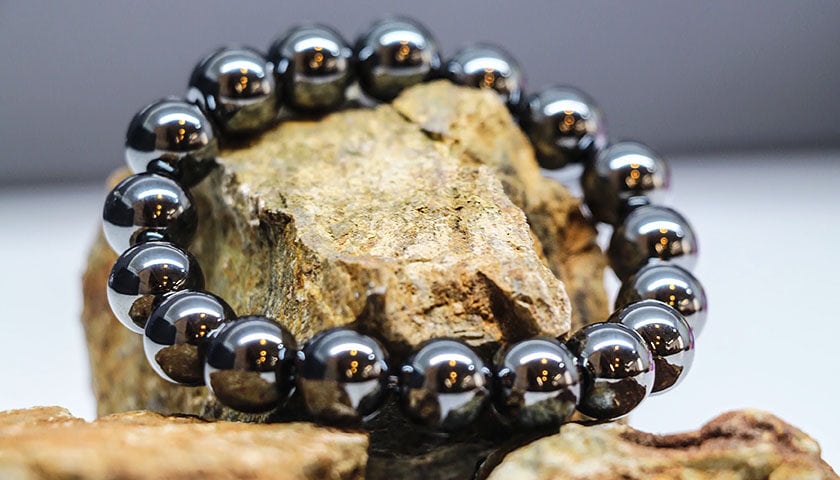
Hematite bracelets are an elegant way to keep the grounding and protective energy of this powerful mineral close to your body. Available in a range of styles, from simple stretchy bands to intricate beadwork or elegant metal designs, hematite bracelets can be effortlessly paired with any outfit.
Wearing a hematite bracelet not only makes a stylish statement but also allows you to harness the stone’s potent energy throughout the day, promoting a sense of balance and protection as you navigate life’s challenges.
Hematite Necklace: A Striking Statement Piece
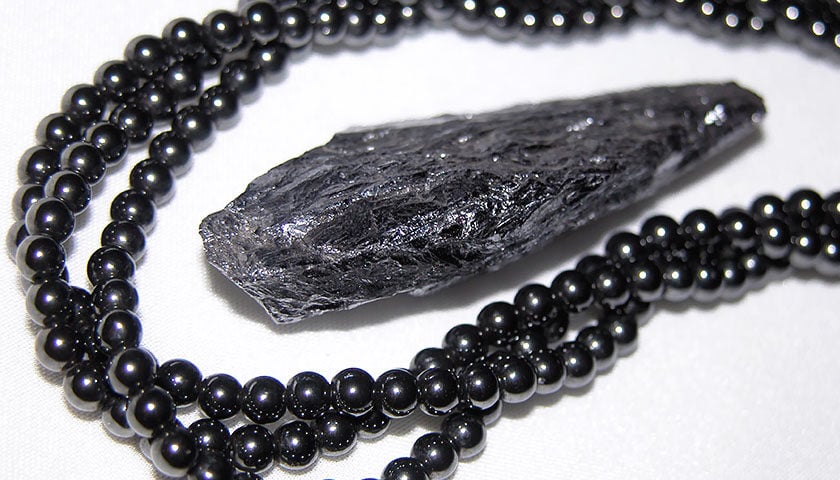
The dark, metallic allure of hematite makes it a stunning choice for necklaces. Hematite necklaces come in a variety of styles, from simple strands of beads to elaborate pendants showcasing the mineral’s captivating beauty.
Wearing a hematite necklace not only adds a bold, eye-catching element to your ensemble but also brings the stone’s grounding and balancing properties to your heart and throat chakras, fostering clear communication and emotional stability.
Hematite Ring: A Symbol of Strength and Stability
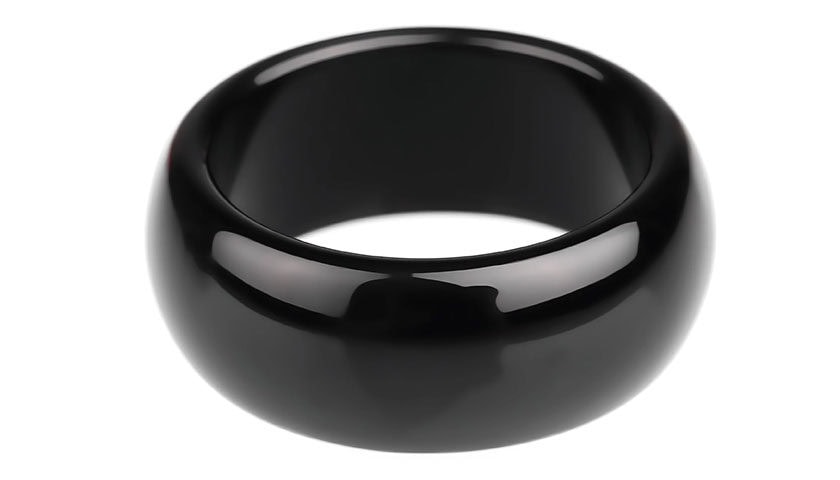
A hematite ring is a unique and powerful piece of jewelry that embodies the strength and stability of this remarkable mineral. Available in a variety of styles, from sleek, minimalist bands to intricately carved or embellished designs, hematite rings make a bold and meaningful statement.
By wearing a hematite ring, you can keep the stone’s grounding and protective energy at your fingertips, providing a constant reminder of your inner strength and resilience.
Hematite Pendant: A Captivating Talisman
Hematite pendants offer a versatile and stylish way to incorporate this powerful mineral into your daily wardrobe. Whether you prefer a simple, polished stone or an intricate, handcrafted design, hematite pendants make a striking addition to any necklace chain.
Wearing a hematite pendant allows you to harness the stone’s grounding and protective properties, promoting a sense of balance and harmony as you go about your day.
Hematite Earrings: A Touch of Elegance
Hematite earrings add a touch of elegance and sophistication to any outfit, showcasing the mineral’s mesmerizing metallic sheen. From simple studs to elaborate drop earrings, hematite earrings provide a chic and eye-catching way to wear this powerful gemstone.
By wearing hematite earrings, you can draw the stone’s grounding and protective energy to your head and ears, promoting mental clarity and focus.
Hematite Beads: A Versatile Component
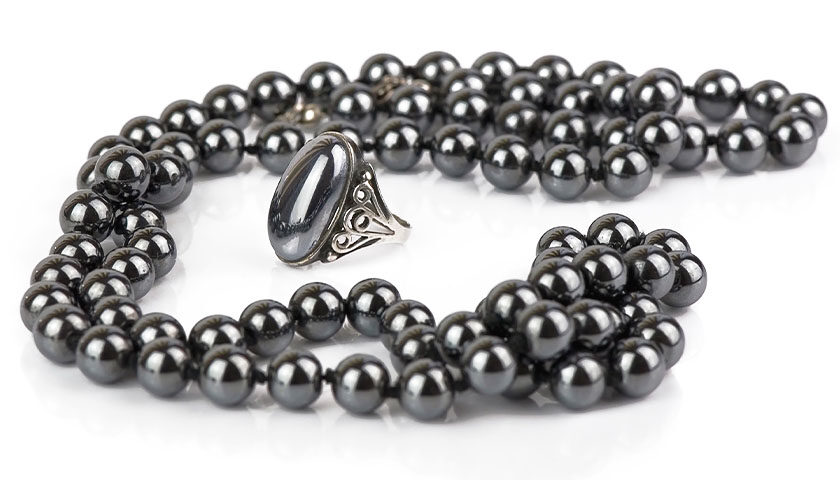
Hematite beads offer a versatile and stylish way to incorporate the mineral’s energy into your jewelry collection. Available in a variety of shapes and sizes, hematite beads can be used to create custom bracelets, necklaces, earrings, and more.
Incorporating hematite beads into your jewelry designs not only adds a unique and captivating element to your creations but also infuses them with the stone’s powerful grounding and protective properties.
Hematite Cleansing and Charging: Unlocking the Power of This Grounding Stone
- Hematite requires regular cleansing and charging to maintain its powerful grounding properties.
- There are various methods to cleanse and charge hematite, including water, salt, sage, incense, sunlight, and moonlight.
- Programming hematite involves setting intentions or affirmations for the stone to amplify and reflect.
How to Cleanse and Charge Hematite
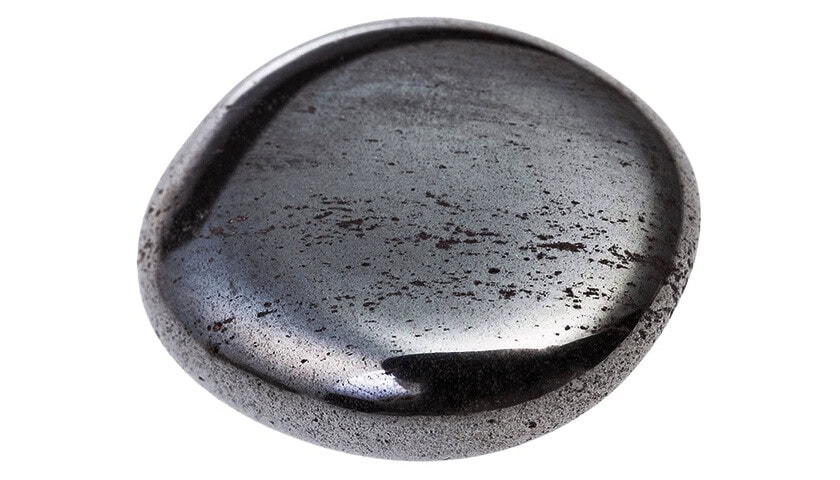
It is essential to know how to cleanse and charge hematite to keep its powerful grounding properties intact. In this chapter, we will explore the various methods of cleansing and charging hematite, including the benefits, risks, and best practices associated with each method.
Water Cleansing
Water is a natural purifier and can be used to cleanse and charge hematite. To use this method, simply rinse the stone under running water for a few minutes. You can also submerge the hematite in a bowl of clean water for a more extended period.
Benefits: Water is readily available and provides a gentle, yet effective, method for cleansing and charging hematite.
Risks: Hematite is a relatively hard mineral, but prolonged exposure to water can cause rusting. Be sure to dry the stone thoroughly after cleansing.
Best Practices: Use purified or distilled water to avoid introducing impurities or contaminants to the hematite.
Salt Cleansing
Salt is a powerful purifier and can be used to cleanse and charge hematite. To use this method, bury the stone in a bowl of sea salt or Himalayan salt for several hours or overnight.
Benefits: Salt has a high vibrational frequency, making it an effective way to remove unwanted energies from hematite.
Risks: Salt can be abrasive, so be cautious when using this method to avoid damaging the surface of the stone.
Best Practices: Use a gentle touch when burying and removing the hematite from the salt. Rinse the stone with water after cleansing to remove any salt residue.
Sage and Incense Cleansing
Sage and incense are often used in smudging rituals to cleanse and charge crystals, including hematite. To use this method, light the sage or incense and allow the smoke to envelop the stone for a few minutes.
Benefits: Sage and incense are powerful purifiers, helping to remove negative energies and recharge hematite.
Risks: The smoke produced by sage and incense can be irritating to some individuals. Be sure to cleanse and charge hematite in a well-ventilated area.
Best Practices: Use a smudge stick made of white sage or an incense with purifying properties, such as sandalwood or Palo Santo.
Sunlight and Moonlight Charging
Exposure to sunlight or moonlight can help recharge hematite’s grounding properties. To use this method, place the stone in direct sunlight or moonlight for several hours.
Benefits: Sunlight and moonlight are natural sources of energy, helping to recharge hematite and enhance its grounding properties.
Risks: Prolonged exposure to sunlight can cause hematite to fade or become damaged. Use caution when charging hematite in sunlight.
Best Practices: Charge hematite during a full moon or sunrise to harness the most potent energies.
How to Program Hematite
Programming hematite involves setting intentions or affirmations for the stone to amplify and reflect. In this chapter, we will cover various approaches to programming, including visualization, intention-setting, and ritual, along with examples of effective hematite programs.
Visualization
Visualization is a powerful tool for programming hematite. To use this method, hold the stone in your hand and close your eyes. Visualize the energy of the hematite amplifying your intention. See the energy of the stone interacting with your own energy field, helping to manifest your desired outcome.
Example: If you want to use hematite to enhance your focus and concentration, visualize the stone’s energy grounding and stabilizing your thoughts, allowing you to remain focused on the task at hand.
Intention-Setting
Setting intentions for hematite is a simple yet effective way to program the stone. To use this method, hold the hematite in your hand and state your intention aloud or silently. Be specific in your intention, as this will help to direct the energy of the stone.
Example: If you want to use hematite for protection, you might set the intention, “I program this hematite to protect me from negative energies and create a shield of grounding energy around me.”
Ritual
Rituals can be an impactful way to program hematite. To use this method, create a sacred space by lighting candles or incense, playing calming music, or laying out other crystals. Place the hematite in the center of the space and state your intention. You can also incorporate meditation or other practices that resonate with you into the ritual.
Example: If you want to use hematite to help balance your root chakra, you might create a ritual that includes meditation focused on the root chakra, visualization of grounding energy, and reciting affirmations related to stability and security.
How to Care for Hematite

Caring for hematite is essential to maintain its energetic properties and effectiveness. In this chapter, we will provide tips and guidelines for caring for hematite, such as avoiding exposure to extreme temperatures, chemicals, or sunlight, and storing the stone in a safe and clean place. We will also discuss how to detect and cleanse any negative or stagnant energies that may affect the stone’s properties and effectiveness.
Environmental Factors
Hematite is sensitive to extreme temperatures, chemicals, and sunlight. To prevent damage to the stone, avoid exposing it to these elements. Store hematite in a cool, dry place away from direct sunlight or heat sources. When cleaning hematite, avoid using harsh chemicals or abrasive materials.
Storage
Store hematite in a clean, safe place to protect it from damage and maintain its energetic properties. A soft cloth or velvet pouch can help protect the stone from scratches and other damage. When storing hematite with other crystals, be mindful of its hardness to prevent any potential damage to softer stones.
Detecting and Cleansing Negative Energies
Regularly cleansing hematite is crucial to maintain its effectiveness. If the stone feels “heavy” or “off,” it may have absorbed negative or stagnant energies. Use one of the cleansing methods discussed earlier in this article to cleanse and recharge the stone, ensuring it remains a powerful tool for grounding and protection.
By following these guidelines for cleansing, charging, programming, and caring for hematite, you can harness the powerful grounding properties of this remarkable stone, enhancing your spiritual practices and overall well-being.
Hematite Affirmations: Unlocking the Power of Grounding and Protection
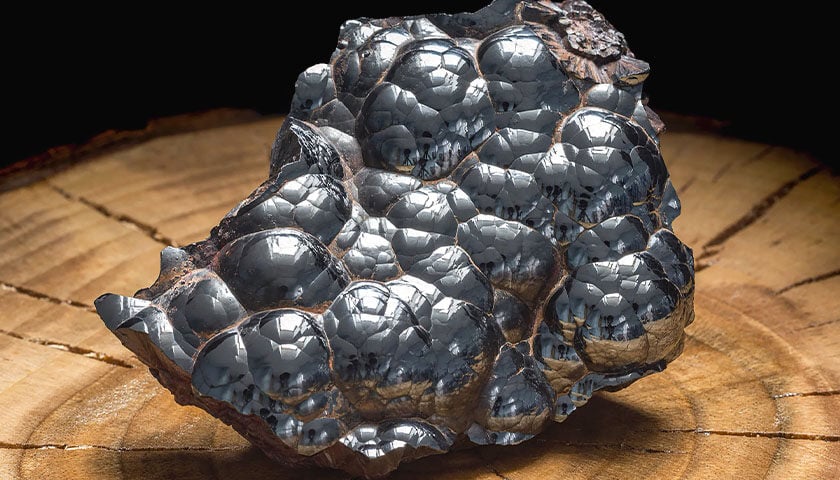
- Affirmations are positive statements that help reprogram the subconscious mind and manifest desired outcomes.
- Hematite, a grounding and protective stone, can be used in conjunction with affirmations to enhance their effectiveness.
- Specific hematite affirmations can be used for various purposes, such as grounding, protection, and self-confidence.
What are Affirmations and How Do They Work?
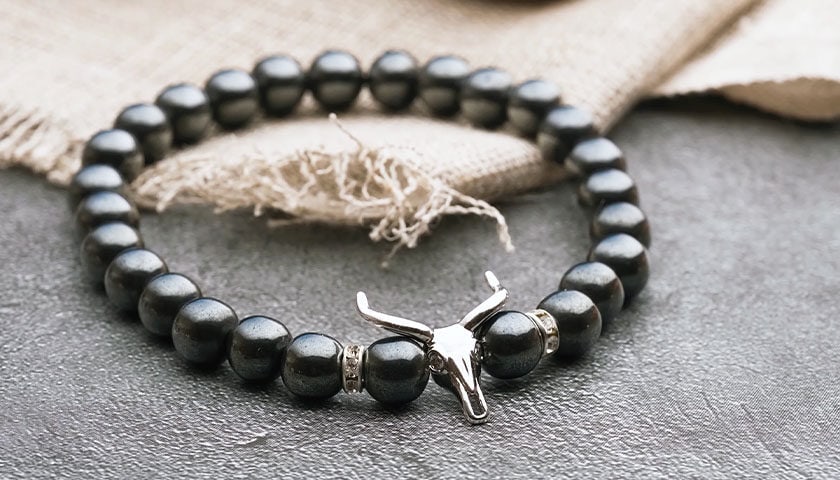
Affirmations are positive statements or phrases that are used to help reprogram the subconscious mind, replacing limiting beliefs and negative thought patterns with more empowering ones. By regularly repeating affirmations, either aloud or silently, you can influence your thoughts, emotions, and actions to create positive change in your life. Affirmations are a powerful tool for personal development, helping to manifest desired outcomes, boost self-confidence, and improve overall well-being.
The effectiveness of affirmations lies in their ability to influence the subconscious mind. The subconscious mind is responsible for many of our automatic thoughts, feelings, and behaviors. By consistently repeating positive affirmations, we can override negative thought patterns and beliefs, replacing them with more positive and empowering ones. Over time, this can lead to a shift in our mindset, which can have a profound impact on our lives.
How Can Hematite Be Used for Affirmations?
Hematite is a powerful grounding and protective stone, known for its ability to help stabilize emotions, strengthen the connection to the Earth, and provide a sense of security. Hematite can be used in conjunction with affirmations to enhance their effectiveness and amplify the energy of the positive statements.
To use hematite for affirmations, you can either hold the stone in your hand or wear it as a piece of jewelry, such as a bracelet, necklace, or ring. As you repeat your affirmations, visualize the grounding and protective energy of the hematite surrounding you, amplifying the power of the words and helping to anchor the new beliefs into your subconscious mind.
Hematite’s grounding properties can also help to keep you focused and present as you repeat your affirmations, preventing your mind from wandering or becoming distracted by negative thoughts. Additionally, hematite’s protective energy can shield you from any external negativity, allowing you to remain in a positive and receptive state as you work with your affirmations.
Hematite Affirmations
When working with hematite affirmations, it’s essential to choose statements that resonate with you and align with your personal goals and intentions. Below are some examples of hematite affirmations that can be used for various purposes, such as grounding, protection, and self-confidence:
Grounding
- “I am deeply connected to the Earth, and its energy grounds and stabilizes me.”
- “My energy is balanced and aligned with the Earth’s frequency.”
- “I am present and focused in the here and now.”
Protection
- “I am surrounded by a powerful shield of hematite energy, protecting me from negativity and harm.”
- “My energy is strong and secure, and I am safe in all situations.”
- “I release all fear and anxiety, knowing that I am divinely protected.”
Self-Confidence
- “I am strong, capable, and confident in my abilities.”
- “I trust in my inner strength and wisdom to guide me through any challenges.”
- “I embrace my true self, and I am proud of who I am.”
As you work with hematite affirmations, remember to speak the words with conviction, believing in their power to create positive change in your life. Be patient and consistent, knowing that change takes time and dedication. By combining the grounding and protective energy of hematite with the power of positive affirmations, you can create a potent tool for personal growth and transformation.
Personalized Affirmations
While the examples provided above can be a great starting point, it’s essential to create affirmations that resonate with your unique needs and desires. Take some time to reflect on what aspects of your life you’d like to improve or what goals you want to achieve. Then, craft personalized hematite affirmations that align with these intentions.
For example, if you’re working on improving your relationships, you might create an affirmation like, “My connections with others are strong, loving, and supportive.” Or, if you’re focusing on career growth, you could use an affirmation such as, “I am successful in my career, and I attract abundant opportunities for growth and advancement.”
When creating your personalized hematite affirmations, remember to:
- Keep them in the present tense, as if they’re already true.
- Focus on the positive, avoiding negative language.
- Be specific and concise, using clear and straightforward language.
- Make them emotionally charged, tapping into the feelings you wish to cultivate.
As you work with your personalized hematite affirmations, envision the energy of the stone amplifying your intentions and helping to manifest your desired outcomes.
Hematite’s grounding and protective properties make it a powerful ally when working with affirmations. By combining the energy of this potent stone with the power of positive statements, you can create a transformative tool that promotes personal growth, emotional healing, and spiritual development. Remember to be patient, consistent, and open to the changes that unfold as you work with hematite affirmations, trusting in their ability to help you manifest a life filled with positivity, strength, and purpose.
Hematite Shapes and Forms: Exploring the Beauty and Energy of This Powerful Stone
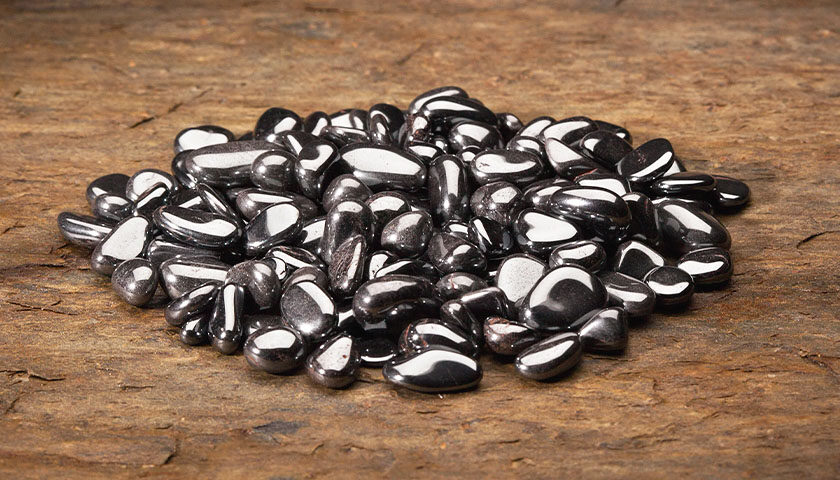
Hematite, a powerful grounding and protective stone, comes in a variety of shapes and forms, each offering unique aesthetic and energetic properties:
Hematite Tumbled Stones
Tumbled hematite stones are small, polished pieces of hematite that have been smoothed by tumbling in a rock tumbler or naturally by water and sand. These smooth, shiny stones showcase the beautiful metallic luster of hematite and are often used for meditation, energy work, or as decorative items.
The smooth, polished surface of tumbled hematite stones makes them ideal for carrying in a pocket or pouch, allowing you to benefit from the stone’s grounding and protective energy throughout the day. Tumbled hematite can also be placed around your home or workspace to create a protective shield against negative energies.
Hematite Rough Stones
Rough hematite stones are unpolished pieces of hematite that display the mineral’s natural, raw beauty. These stones can vary in size and shape, revealing the unique crystal structure and metallic luster of hematite. Rough stones are often used for grid work, meditation, or as stunning display pieces in a collection.
The raw energy of rough hematite stones can be particularly powerful, offering a more potent connection to the Earth and its grounding energy. These stones can also be used for crystal layouts, amplifying the energy of other stones and helping to anchor your intentions.
Hematite Spheres
Hematite spheres are polished, round stones that exhibit the mineral’s characteristic metallic luster. These spheres are often used for meditation, energy work, or as beautiful display pieces.
The spherical shape of hematite spheres allows for the even distribution of the stone’s grounding and protective energy, making them ideal for use in a healing space or on an altar. Hematite spheres can also be used for scrying or gazing, aiding in the development of intuition and psychic abilities.
Hematite Hearts
Hematite hearts are polished, heart-shaped stones that showcase the metallic beauty of hematite. These unique stones are often used as tokens of love or affection, as well as for meditation and energy work.
The heart shape of hematite hearts encourages the connection between the grounding energy of hematite and the emotional heart center. These stones can help to stabilize emotions and promote a sense of security and self-confidence.
Hematite Pyramids
Hematite pyramids are polished, pyramid-shaped stones that display the striking metallic luster of hematite. These stones are often used for energy work, meditation, or as eye-catching display pieces.
The pyramid shape of hematite pyramids is believed to focus and amplify the stone’s grounding and protective energy, making them powerful tools for manifestation and transformation.
Hematite Wands
Hematite wands are polished, elongated pieces of hematite that are often used for energy work, meditation, or as unique display items. These wands can be used to direct and focus the grounding and protective energy of hematite, making them ideal for energy healing sessions and rituals.
Hematite Palm Stones
Hematite palm stones are polished, flat stones that fit comfortably in the palm of your hand. These stones are often used for meditation, energy work, or as soothing stress-relief tools.
The smooth, flat surface of hematite palm stones makes them ideal for holding during meditation or energy work, allowing for a strong connection to the stone’s grounding and protective energy.
Hematite Cabochons
Hematite cabochons are polished, rounded or oval-shaped stones that are often used for jewelry making or as decorative elements in various crafts. These stones showcase the beautiful metallic luster of hematite and can be used to create stunning pendants, earrings, rings, or other adornments.
Wearing hematite cabochons as jewelry allows you to benefit from the stone’s grounding and protective energy throughout the day, as well as providing a stylish and eye-catching accessory.
Hematite Value
As a versatile and abundant mineral, hematite is relatively affordable compared to many other gemstones. Its value is determined by several factors, including size, quality, and craftsmanship.
In general, larger hematite pieces with a high-quality polish and striking metallic luster will fetch a higher price. Additionally, hematite specimens with unique or intricate crystal formations can be more valuable due to their rarity and visual appeal.
Hematite jewelry pieces, such as those featuring hematite cabochons, will also vary in value depending on the quality of the stone, as well as the design, craftsmanship, and materials used in creating the piece.
The Best Combination to Use with Hematite
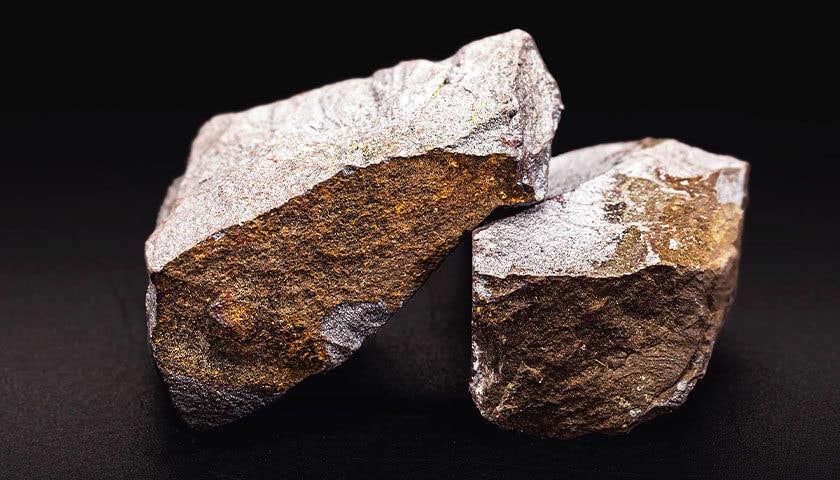
Hematite and Amethyst
Combining the grounding energy of hematite with the calming and spiritual vibrations of amethyst creates a powerful blend that can bring balance and clarity to your life. Amethyst, with its beautiful purple hue, is known for its ability to enhance intuition, spiritual growth, and emotional healing. The protective qualities of hematite will keep you rooted and centered, while amethyst’s soothing energy will help open your mind to new insights and spiritual wisdom.
When you wear or carry hematite and amethyst together, you can enjoy a harmonious and balanced energy flow that promotes inner peace, mental clarity, and emotional healing. This combination is especially helpful for those seeking to develop their psychic abilities, as hematite will keep you grounded while amethyst opens your third eye chakra and enhances your intuition.
Hematite and Carnelian
The pairing of hematite and carnelian is a potent mix of grounding and energizing energies that can help you harness your inner power and motivation. Carnelian, with its warm, vibrant orange hue, is a stone of courage, creativity, and self-confidence. It helps to ignite your passion and drive, encouraging you to take action towards achieving your goals and dreams.
Together, hematite’s grounding and stabilizing energy will support your endeavors, while carnelian’s fiery and motivating vibrations will propel you forward with enthusiasm and determination. This combination is perfect for those in need of a boost in motivation, confidence, or creativity. Wear or carry these stones together to tap into their synergistic energy and unlock your full potential.
Hematite and Lapis Lazuli
Combining the powerful grounding properties of hematite with the spiritual and intuitive energies of lapis lazuli creates a dynamic duo that can elevate your spiritual practice and enhance your self-awareness. Lapis lazuli, with its deep blue color and golden flecks, is a stone of wisdom, truth, and spiritual insight. It activates the third eye chakra, promoting clarity of thought and the ability to see beyond the physical realm.
The stabilizing and grounding energy of hematite will keep you anchored during meditation or spiritual work, while lapis lazuli’s high vibrations will guide you on your journey to self-discovery and spiritual growth. This combination is ideal for those seeking deeper understanding, inner truth, and heightened intuition. Carry or wear hematite and lapis lazuli together to harness their complementary energies and elevate your spiritual practice.
Hematite and Rose Quartz
The nurturing and loving energy of rose quartz, combined with the grounding and protective vibrations of hematite, creates a comforting and harmonious blend that promotes emotional healing and self-love. Rose quartz, often referred to as the “stone of universal love,” is known for its gentle pink hue and its ability to open the heart chakra, encouraging compassion, forgiveness, and emotional balance.
When paired with hematite, these loving energies are supported and amplified, allowing you to feel more grounded and secure in your emotional well-being. This combination is especially helpful for those dealing with grief, heartache, or low self-esteem. Wearing or carrying hematite and rose quartz together can bring a sense of emotional stability, self-acceptance, and inner peace, as well as encouraging you to give and receive love with an open heart.
Comparing Hematite to other gemstones
Hematite vs. Magnetite
Hematite and magnetite are both iron oxide minerals, but they have different physical and chemical properties. Hematite has a metallic gray to reddish-brown color, while magnetite is black and highly magnetic. Hematite is the most abundant iron ore, and its high iron content (70%) makes it a valuable resource for steel production. Magnetite, on the other hand, contains less iron (approximately 60%) but has a natural magnetism that makes it useful in electronics and magnetic therapy. Both minerals have been used as pigments, and hematite has a rich history in jewelry and amulets.
Hematite vs. Obsidian
Hematite and obsidian differ significantly in their composition and formation. Hematite is an iron oxide mineral, while obsidian is a volcanic glass formed when molten lava cools quickly. Hematite has a metallic sheen and can range in color from gray to reddish-brown, while obsidian is typically black or dark green with a glassy luster. Hematite is often used for grounding and protection, while obsidian is known for its powerful energy cleansing properties and its ability to sharpen one’s intuition.
Hematite vs. Pyrite
Hematite and pyrite are both metallic minerals, but they have distinct compositions and appearances. Hematite is an iron oxide with a metallic gray to reddish-brown color, while pyrite is an iron sulfide with a brassy yellow hue and a shimmering, reflective surface. Hematite is often used for grounding and protection, while pyrite is known as a stone of luck and abundance. Both minerals have been used in jewelry, and pyrite has a long history as a source of ignition in early firearms.
Hematite vs. Black Tourmaline
Hematite and black tourmaline are both protective stones, but they have different compositions and properties. Hematite is an iron oxide with a metallic sheen, while black tourmaline is a complex silicate mineral with a vitreous luster. Hematite is known for its grounding and stabilizing energy, while black tourmaline is valued for its powerful protection against negative energies and electromagnetic pollution. Both stones are popular choices for jewelry and amulets.
Hematite vs. Terahertz Stone
Hematite and terahertz stone have distinct properties and uses. Hematite is an iron oxide mineral with a metallic gray to reddish-brown color, while terahertz stone is a man-made gemstone composed of silicon and oxygen. Hematite is often used for grounding and protection, while terahertz stone is believed to have a high vibrational frequency that promotes overall well-being. Hematite has a long history in jewelry and amulets, while terahertz stone is a more recent innovation in the world of crystal healing.
Hematite vs. Onyx
Hematite and onyx are both popular stones for jewelry, but they have different compositions and appearances. Hematite is an iron oxide with a metallic sheen and a gray to reddish-brown color, while onyx is a variety of chalcedony with a waxy luster and typically black or banded colors. Hematite is valued for its grounding and protective properties, while onyx is known for its ability to strengthen one’s willpower and determination.
Hematite vs. Goethite
Hematite and goethite are both iron oxide minerals, but they have different physical properties and crystal structures. Hematite has a metallic gray to reddish-brown color and is often used for grounding and protection. Goethite, on the other hand, is typically brown or yellowish-brown with an earthy luster. Goethite is a hydrated iron oxide and is often associated with the formation of limonite and other iron ore deposits. Both hematite and goethite have been used as pigments, but hematite is more commonly used in jewelry and amulets.
Hematite vs. Shungite
Hematite and shungite are distinct in their composition and properties. Hematite is an iron oxide mineral with a metallic gray to reddish-brown color, while shungite is a carbon-rich mineraloid with a black, semi-metallic appearance. Hematite is valued for its grounding and protective properties, while shungite is renowned for its ability to purify water and protect against electromagnetic radiation. Both stones are popular choices for jewelry and amulets, but shungite is rarer and more valuable.
Hematite vs. Meteorite
Hematite and meteorites differ in their origins and compositions. Hematite is an iron oxide mineral found in various rock formations on Earth, while meteorites are extraterrestrial rocks that have fallen to the Earth’s surface from space. Meteorites can be composed of various minerals, including iron, nickel, and other metals. Hematite is often used for grounding and protection, while meteorites are sought after for their unique cosmic energy and connection to the universe. Both hematite and meteorite pieces can be used in jewelry and amulets, but meteorites are rarer and more valuable.
Hematite vs. Marcasite
Hematite and marcasite are both metallic minerals, but they have different compositions and appearances. Hematite is an iron oxide with a metallic gray to reddish-brown color, while marcasite is an iron sulfide with a brassy yellow hue and a reflective surface. Hematite is known for its grounding and protective properties, while marcasite is often associated with creativity and mental clarity. Both minerals have been used in jewelry, with marcasite being especially popular during the Victorian era for its intricate and elegant designs.
Frequently Asked Questions About Hematite
What is Hematite used for?
Hematite is used for grounding, protection, and balancing energies. It is also popular in jewelry, amulets, and home décor items. Hematite has been used as a pigment in paint and as an iron ore in steel production.
Do Hematite rings break?
Hematite rings can break if subjected to rough handling or dropped on hard surfaces, as they have a Mohs hardness of 5.5 to 6.5, making them somewhat brittle.
How to tell if Hematite is real?
Genuine hematite is heavy and cold to the touch. It leaves a red streak when rubbed against unglazed porcelain or white paper. Real hematite is also non-magnetic, unlike its synthetic counterpart, hematine.
Does Hematite rust?
Hematite can rust when exposed to water or moist air, as it contains iron. However, the rusting process is slow and can be prevented by proper care and storage.
Is Hematite metallic or nonmetallic?
Hematite can exhibit both metallic and nonmetallic luster, depending on its form. Metallic hematite has a shiny, reflective surface, while nonmetallic hematite has an earthy, dull appearance.
Is Hematite magnetic?
Natural hematite is weakly magnetic. However, synthetic hematite, known as hematine or magnetic hematite, is much more strongly magnetic due to its manufacturing process.
How is Hematite formed?
Hematite is formed through the oxidation of iron-rich minerals in various geological environments, including sedimentary, metamorphic, and igneous rocks.
Is Hematite a rock or a mineral?
Hematite is a mineral, specifically an iron oxide with the chemical formula Fe2O3.
What is the history of Hematite’s use in jewelry?
Hematite has been used in jewelry and amulets since ancient times. Egyptians, Romans, and Victorians all valued hematite for its beauty and protective properties.
What is the significance of Hematite in spiritual practices?
Hematite is believed to promote grounding, protection, and balance, connecting the physical and spiritual realms and helping one maintain a centered, focused energy.
Is Hematite toxic?
Hematite is not considered toxic. However, it is not recommended to ingest or inhale powdered hematite due to its iron content.
Can Hematite be used for healing purposes?
Many people believe that hematite can be used for healing purposes, such as improving circulation, alleviating stress and anxiety, and balancing emotions.
How should Hematite be cleaned and cared for?
Hematite can be cleaned with a soft cloth and mild soap. It should be kept away from water and moist air to prevent rusting. Store hematite in a dry, safe place to prevent chipping or breaking.
What is the difference between Hematite and Magnetite?
Hematite is an iron oxide (Fe2O3) with a metallic to earthy luster, while magnetite is an iron oxide (Fe3O4) with a metallic luster and strong magnetic properties.
How does Hematite relate to other iron minerals?
Hematite is one of many iron minerals, including magnetite, goethite, limonite, and siderite. Each iron mineral has distinct properties and uses, but all play a crucial role in the Earth’s geological processes and human industry.
What are some interesting facts about Hematite?
Hematite is the primary ore of iron, has been used as a pigment since prehistoric times, and is associated with grounding, protection, and balance in various spiritual traditions.
Can Hematite be found in meteorites?
Yes, hematite can be found in meteorites, specifically in the iron-nickel meteorites called octahedrites.
Is Hematite always opaque, or can it be translucent or transparent?
Hematite is typically opaque. However, in rare cases, it can be found in translucent or transparent forms, such as specularite, which is a variety of hematite with a shiny, reflective surface.
What is the difference between Hematite and Hematine?
Hematite is a natural iron oxide mineral, while hematine is a synthetic, magnetic material that resembles hematite but has a different composition and properties.
Can Hematite be synthesized in a lab?
Yes, hematite can be synthesized in a lab through various chemical processes, such as hydrothermal synthesis or precipitation from iron salt solutions.
How does Hematite play a role in soil formation and fertility?
Hematite contributes to soil formation by weathering and releasing iron and other nutrients into the soil, which in turn supports plant growth and overall soil fertility.
What does Hematite symbolize?
Hematite symbolizes grounding, protection, and balance. It is associated with strength, courage, and determination.
How does Hematite aid in grounding and balancing?
Hematite is believed to absorb and transmute negative energies, helping to ground and balance the user’s energy field, promoting mental clarity and emotional stability.
Does Hematite help arthritis?
While there is no scientific evidence to support this claim, some people believe that wearing hematite jewelry can help alleviate arthritis pain due to its grounding and balancing properties.
Can Hematite help with anxiety and stress relief?
Many people believe that hematite can help reduce anxiety and stress by grounding and balancing energy, promoting mental clarity and emotional stability.
How does Hematite affect the root chakra?
Hematite is associated with the root chakra (Muladhara) and is believed to help ground and balance the energy of this chakra, promoting stability, security, and a sense of belonging.
Can Hematite help with blood circulation and iron deficiencies?
While there is no scientific evidence to support this claim, some people believe that hematite can help improve blood circulation and alleviate iron deficiencies due to its iron content and grounding properties.
What is Hematite’s connection to the zodiac sign Aries?
Hematite is connected to Aries due to its grounding, protective, and balancing properties, which can help Aries individuals stay focused, courageous, and determined.
What is the spiritual significance of Hematite in Native American cultures?
In Native American cultures, hematite has been used for protection and grounding, as well as in ceremonial face paint and as a pigment for pottery.
What is Hematite’s connection to the chakra system?
Hematite is primarily connected to the root chakra (Muladhara), but its grounding and balancing properties can also support overall chakra alignment and energy flow
Can Hematite be used for protection and grounding during meditation?
Yes, many people use hematite for protection and grounding during meditation. Its energy is believed to create a strong shield against negative energies, while also grounding and centering the user, allowing for a deeper, more focused meditative state.
How to clean Hematite stone?
To clean hematite, gently wipe the surface with a soft cloth and mild soap. Avoid immersing the stone in water, as it can cause rusting. After cleaning, dry the stone thoroughly and store it in a dry, safe place to prevent chipping, breaking, or rusting.
| Hematite Physical Properties | |
|---|---|
| Crystal Structure | Rhombohedral |
| Mineral Class | Oxide |
| Specific Gravity | 5.26 |
| Formula | Fe2O3 |
| Hardness | 5.5 – 6.5 (Mohs scale) |
| Transparency | Opaque |
| Chemical Composition | Iron(III) oxide |
| Locations | Brazil, Australia, USA, Canada, South Africa, India |
| Rarity | Common |
| Can Be Submerged in Water | Yes |
| Sun Safe Crystal | Yes |
| Special Care Instructions | Avoid exposure to strong acids and high temperatures |
| Price/Carat | $0.5 – $2.00 |
| Hematite Metaphysical Properties | |
|---|---|
| Chakras | Root Chakra (1st) |
| Zodiac Signs | Aries, Aquarius |
| Planets | Mars, Saturn |
| Numerical Vibration | 9 |
| Elements | Earth, Fire |
| Symbolism | Grounding, Stability, Protection |
| Birthstones | March, January |
| Affirmations | I am grounded and secure. I release all negativity and embrace positivity. I am protected and safe. I am strong and resilient. My energy is balanced and harmonious. |
| Physical Conditions | Anemia, Blood circulation, Muscle cramps, Detoxification, Insomnia |
| Emotional Conditions | Anxiety, Fear, Self-esteem, Courage, Emotional balance |
| Spiritual Purposes | Grounding, Aura cleansing, Spiritual protection, Energy balancing, Manifestation |
| Crystal Combinations | Hematite + Black Tourmaline, Hematite + Amethyst, Hematite + Clear Quartz, Hematite + Smoky Quartz, Hematite + Lapis Lazuli |

